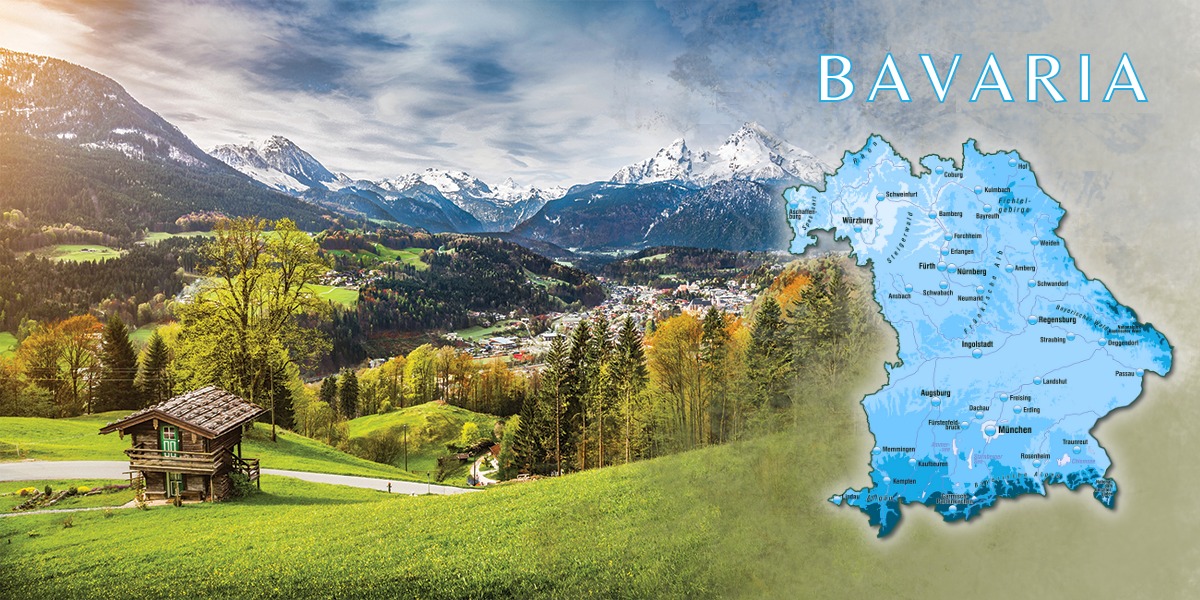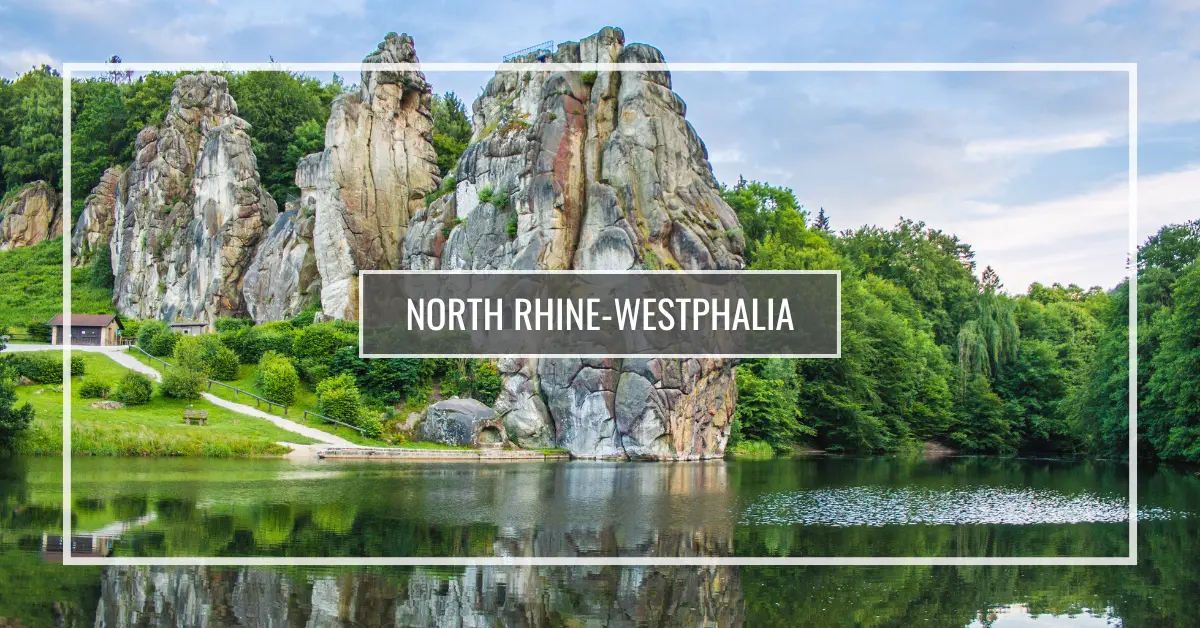- Home
- 16 Federal States of Germany
The 16 Federal States of Germany: Facts, Photos, & Map
By: Gerhild Fulson / Using her extensive experience and cultural knowledge, Oma Gerhild provides trusted, authentic, and easy-to-follow German recipes both here and in her many cookbooks.
The 16 Federal States of Germany are really 16 "mini countries" that are joined to make one big country, Germany.
Yes, that's right.
They're called Bundesrepublik Deutschland (Federal States of Germany or the Federal Republic of Germany) each one having its own set of rules, its own government, and its own sense of self.
They're quite different from each other. And, these differences make Germany the interesting and colorful place it is!
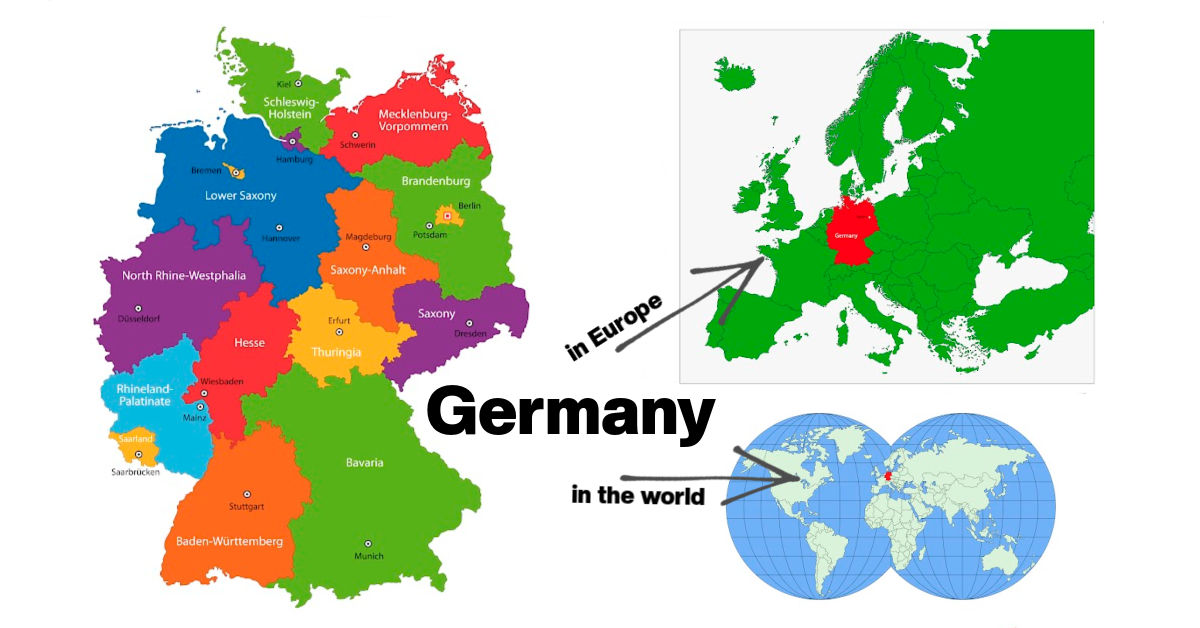
These 16 states are scattered all over Germany, from the North Sea coastlines to the Alps in the south. Every state has its own unique food, dialect, nature, history, and even architecture — you name it, they've got it.
Since we've visited each of them, we'll give you our unique perspective on what's outstanding, what to check out, and, most importantly, what to munch on! Brace yourself for a yummy ride!
On this page:
Baden-Württemberg
The first of the 16 Federal States of Germany we'll visit is Baden-Württemberg. Located in the southwest of Germany, it shares borders with Switzerland and France. It's the industrial heartland of Germany, with a mix of automotive industry, biotechnology, vineyards, and wine production.
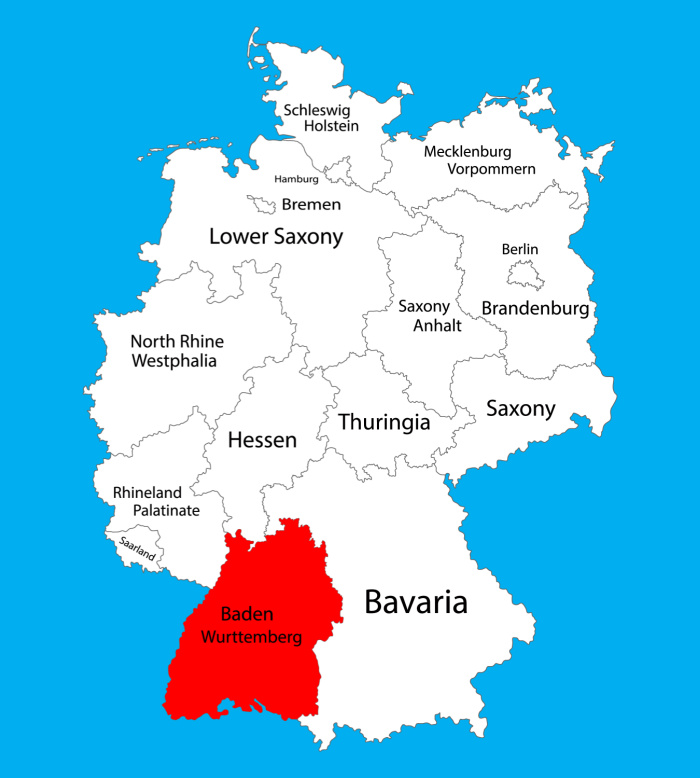
Must-see attractions:
1. Schloss Heidelberg
Heidelberg Castle is one of the most iconic landmarks in Germany. Overlooking the Neckar River, it's known for its architecture and panoramic views of Heidelberg.
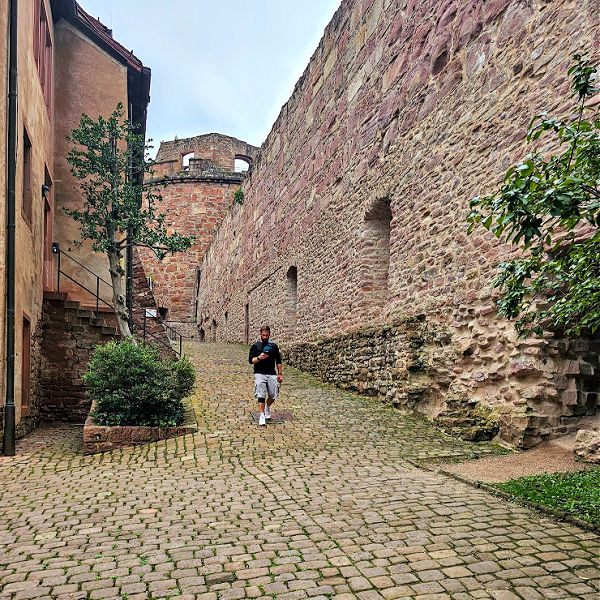 Eran strolling through the Heidelberg Castle courtyard.
Eran strolling through the Heidelberg Castle courtyard.2. Europa-Park Rust
One of Europe's largest and most popular amusement parks is located near Freiburg. With its wide variety of rides, attractions, and shows, it's fun for the whole family.
3. Burg Hohenzollern
Hohenzollern Castle, near Hechingen, is a majestic hilltop fortress with imposing architecture and panoramic views of the Swabian Alps.
4. Schwarzwald
The Black Forest spans the southwestern part of Germany, with the largest part in Baden-Württemberg. There's so much to enjoy amid the dense forests and secluded valleys: hike the scenic trails, go mountain biking, ski in the winter, buy the local crafted cuckoo clocks.
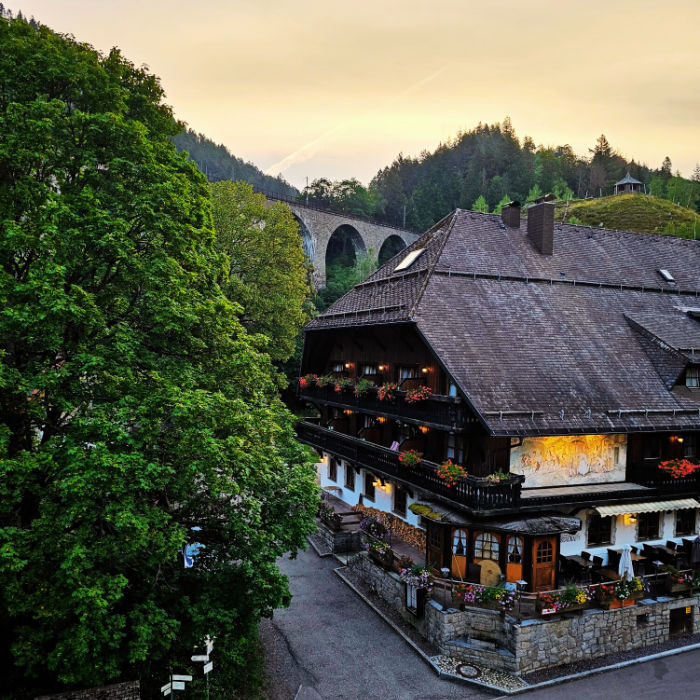 The sunrise view from my room in the Hotel Hofgut Sternen in Breitnau in the Black Forest. Breathtaking!
The sunrise view from my room in the Hotel Hofgut Sternen in Breitnau in the Black Forest. Breathtaking!5. Bodensee
Lake Constance, near the Austrian and Swiss borders, is the perfect place for water sports. Many towns along its shores have promenades and cultural events. Stop in at Friedrichshafen and see the Zeppelin Museum. Stroll around Mainau Island, known as the “Island of Flowers”. There is so much to see and do.
Learn more about Baden-Württemberg:
Bavaria
The Free State of Bavaria, the largest federal state of Germany, is known for its distinct culture, beautiful cultural landscapes, enchanting old towns, forests and the Bavarian Alps. It has also played a crucial role in the history and politics of Germany. Perhaps it's best known for its yearly Oktoberfest in Munich, but there is so much more to Bavaria than this.
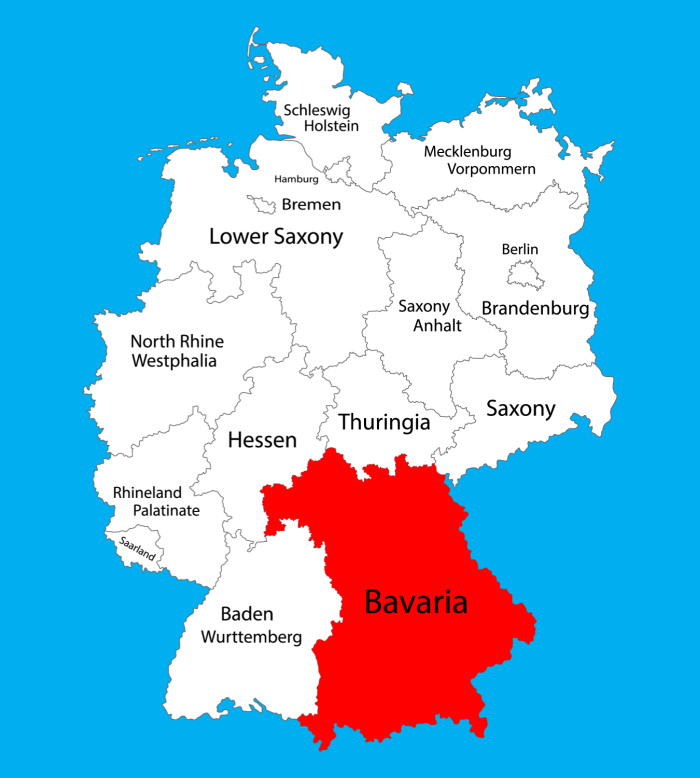
Must-see attractions:
1. Neuschwanstein Castle
Located in the Bavarian Alps near Füssen, this is the fairy tale castle which inspired Disney's Cinderella Castle. Feel like royalty by taking advantage of the horse and carriage ride.
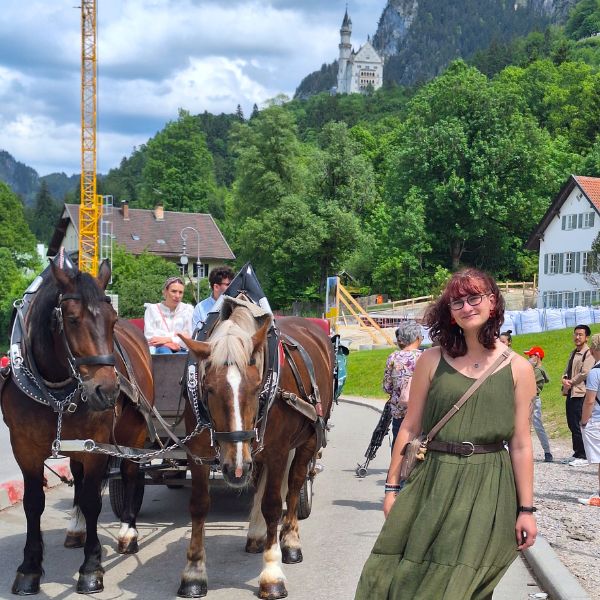 Lydia experienced the horse and carriage ride for herself! What a way to feel like royalty!
Lydia experienced the horse and carriage ride for herself! What a way to feel like royalty!2. Nuremberg
Nürnberg is a well-preserved medieval town with its half-timbered houses. It's well-known for the Nuremberg Castle and its annual Christkindlesmarkt (Christmas market). It also played a significant role in German history.
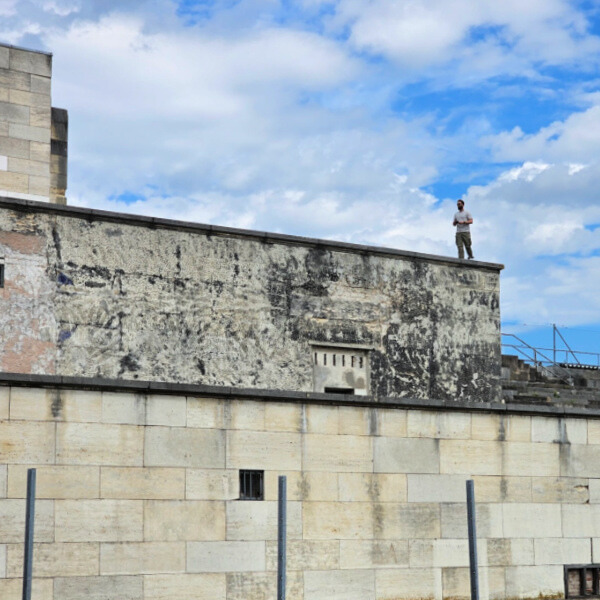 Eran, standing on one of the stages of the grandstand at Zeppelinfeld, the site of the infamous Nuremburg rallies.
Eran, standing on one of the stages of the grandstand at Zeppelinfeld, the site of the infamous Nuremburg rallies.3. Munich
Enjoy Bavaria's capital city, Munich, including the world-famous Oktoberfest beer festival, the Marienplatz with its Glockenspiel, the historic architecture such as the Nymphenburg Palace, and the many world-class museums.
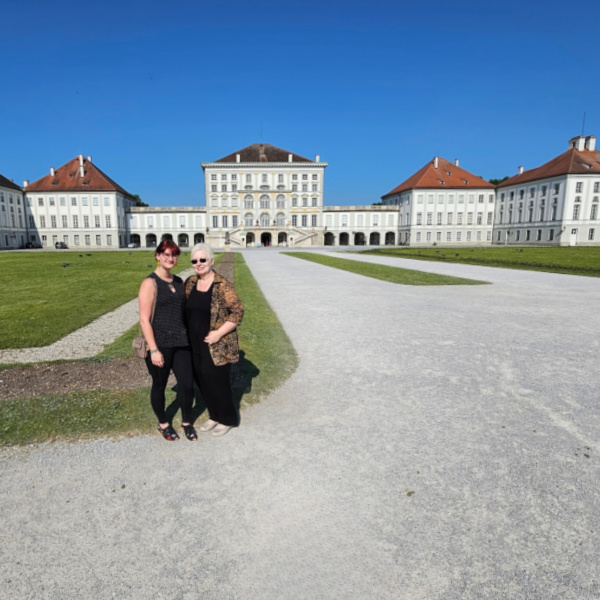 Lydia and I posing in front of the Nymphenburg Palace.
Lydia and I posing in front of the Nymphenburg Palace.4. The Bavarian Alps
This stunning mountain range along the German-Austrian border offers outdoor enthusiasts breathtaking landscapes, hiking trails, and skiing opportunities. The Zugspitze, Germany's highest peak, is within everyone's reach, either by cable car or cog-wheel train.
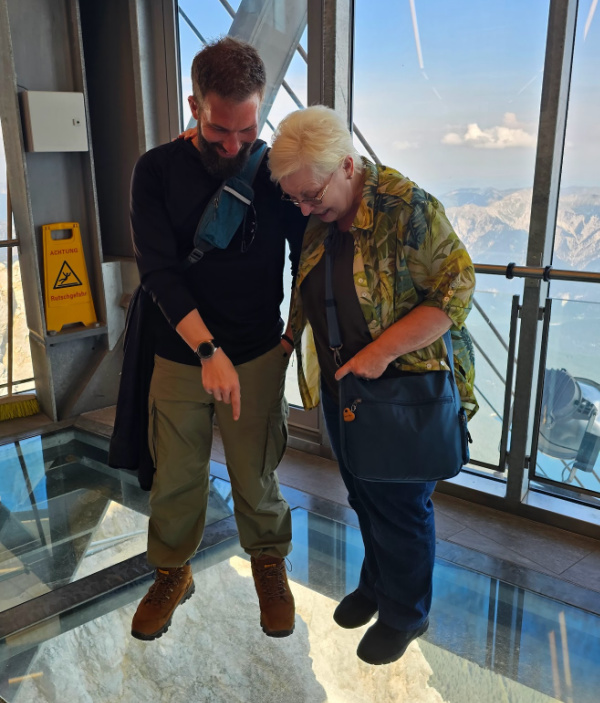 Eran & I are standing on glass floor at the top of the Zugspitze!
Eran & I are standing on glass floor at the top of the Zugspitze!5. Rothenburg ob der Tauber
Among the many medieval towns in Germany, this one is considered to be the most beautiful. Along the Romantic Road, Rothenburg is a favorite with its well-preserved city walls, cobblestone streets, and the infamous Plönlein. If you come in the winter, you'll be able to enjoy the annual Christmas market.
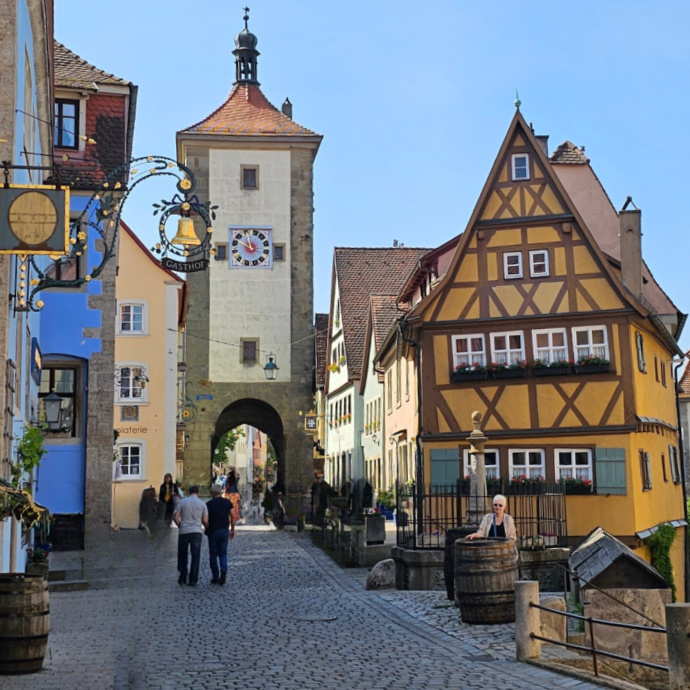 And yes, everyone needs to have a pic taken of themselves in front of the Plönlein! Even me!
And yes, everyone needs to have a pic taken of themselves in front of the Plönlein! Even me!Learn more about Bavaria:
(City State) Berlin
Continuing on our journey through the 16 Federal States of Germany, we come to Berlin, the biggest city in Germany. It is both a city-state and the capital of Germany. With a mix of old and new, Berlin preserves the past while embracing the future.
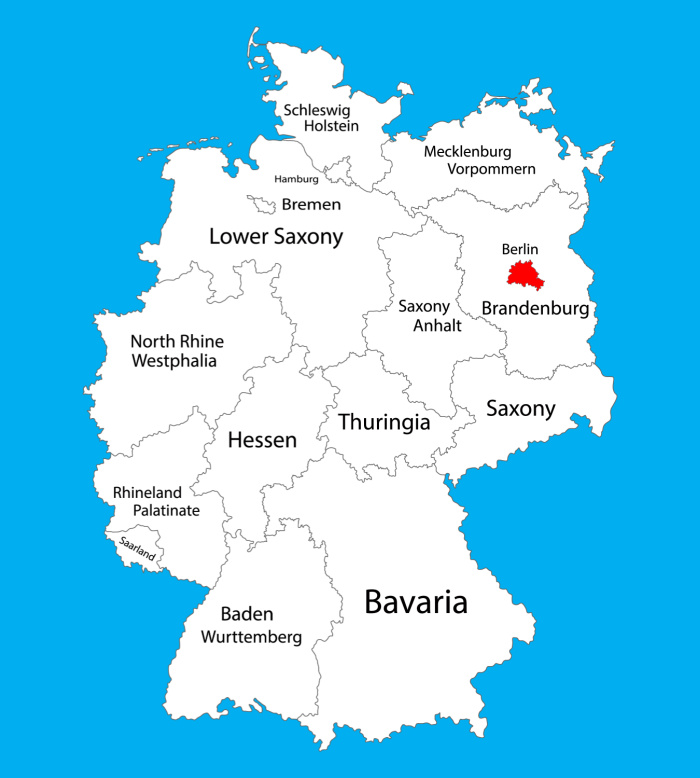
Must-see attractions:
1. Brandenburger Tor
The Brandenburg Gate is an 18th-century monument that has become a symbol for both Germany’s division and reunification.
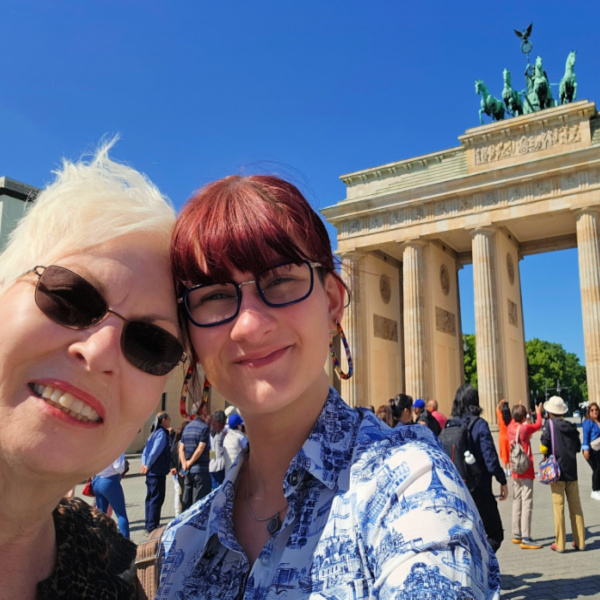 Lydia and I taking the required selfie in front of the Brandenburg Gate.
Lydia and I taking the required selfie in front of the Brandenburg Gate.2. Gedenkstätte Berliner Mauer
The Berlin Wall Memorial marks the division of Berlin by the Berlin Wall and the many who died there.
3. Berliner Dom
The Berlin Cathedral, with its Renaissance architecture and the golden cross on the dome, is an unmissable sight on Museum Island.
4. Museumsinsel
Museum Island is a UNESCO World Heritage Site with a complex of five museums. It's one of Europe’s most valued sites of historical interest.
5. East Side Gallery
The longest open-air gallery in the world with more than 100 murals proclaims a commentary on political change and unity.
Learn more about Berlin:
Brandenburg
Surrounding the bustling city-state of Berlin lies the state of Brandenburg, with its rural and quiet atmosphere. The tranquil landscape provides for nature-based tourism that contrasts with the hustle and bustle of Berlin. Brandenburg has its share of historic castles and palaces to satisfy tourists interested in historical events.
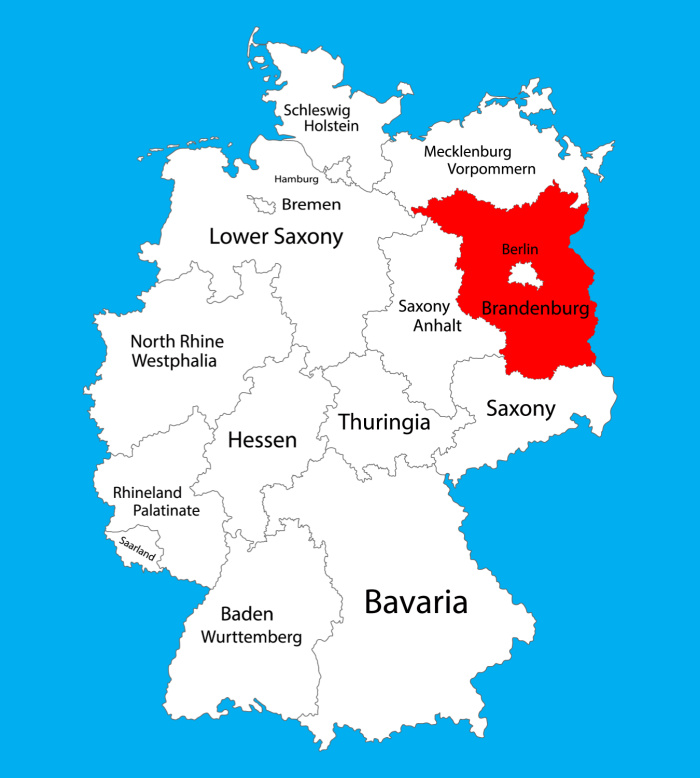
Must-see attractions:
1. Sanssouci
The Palace of Sans Souci is recognized by the UNESCO World Heritage List "an outstanding example of architectural creations and landscaping".
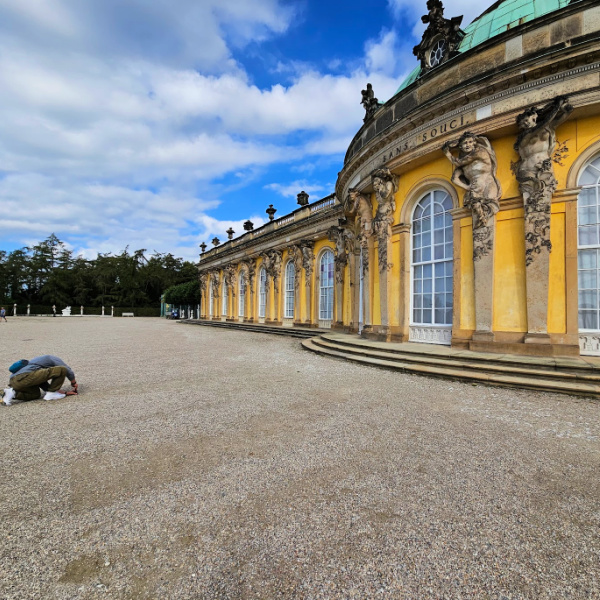 Eran grabbing one of his iconic photos, here at Sanssouci in Brandenburg.
Eran grabbing one of his iconic photos, here at Sanssouci in Brandenburg.2. Biosphärenreservat Spreewald
The Spreewald Biosphere Reserve will have you meandering and paddling through wetlands and waterways.
3. Brandenburger Tor
This Brandenburg Gate was, at one time, part of a wall and is located in Potsdam, and doesn't look like its cousin in Berlin. It could be called "two-faced", with each side designed by a different architect.
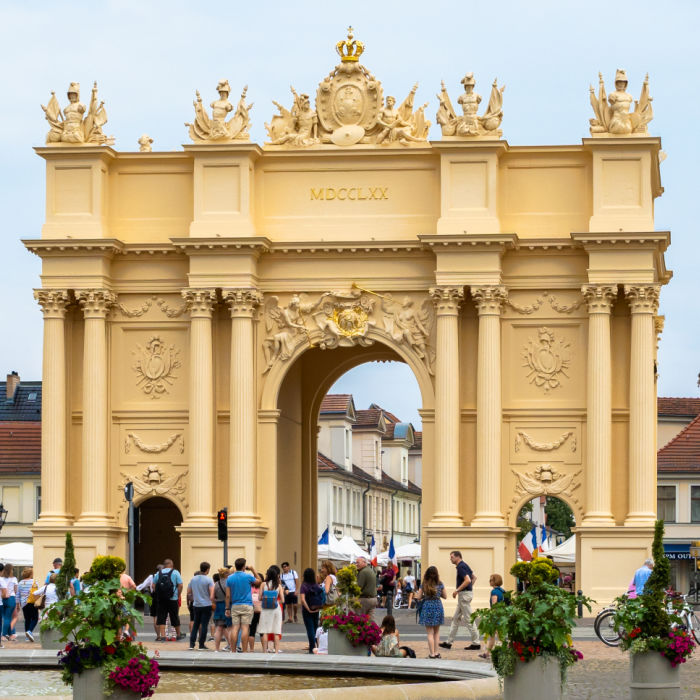 The Brandenburg Gate in Brandenburg, not to be mistaken as the one in Berlin. Definitely not the same!
The Brandenburg Gate in Brandenburg, not to be mistaken as the one in Berlin. Definitely not the same!4. Tropical Islands Resort
Hiding within Europe's largest free-standing hall, you'll find sandy beaches, the longest Double Racer slide in the world, an indoor rainforest, hot air balloons and more!
5. Cecilienhof Palace
Are you a history buff? Then tour this 100-year-old palace, which hosted the Potsdam Conference in 1945. It has a permanent exhibition and a wealth of historical photographs and diverse information throughout the complex.
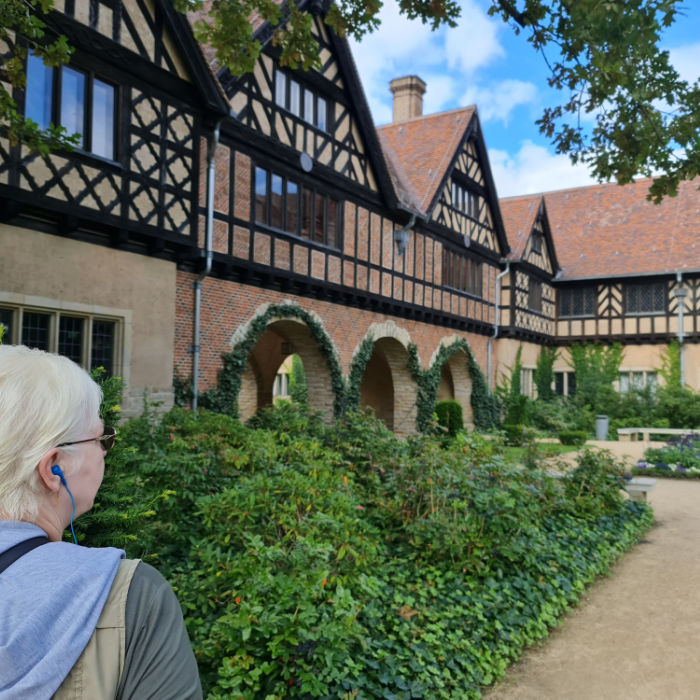 I learned a lot about German history while on our tour of the Cecilienhof in Potsdam, Brandenburg.
I learned a lot about German history while on our tour of the Cecilienhof in Potsdam, Brandenburg.Learn more about Brandenburg:
(City State) Bremen
The free Hanseatic city of Bremen is a city-state in Germany located on the Weser River. Bremen was one of the significant trading cities of the Hanseatic League since 1260, which was made up of merchant guilds from the Baltic Sea and North Sea.
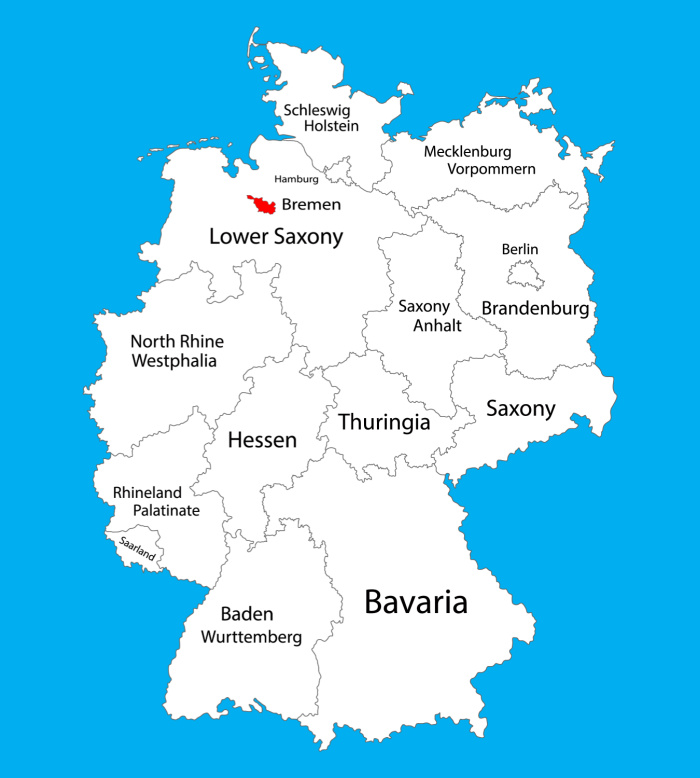
Must-see attractions:
1. Bremer Rathaus and Rolandstatue
On the UNESCO World Heritage List are the Bremen Town Hall and the Roland Statue in the town square, a symbol of freedom.
2. St. Petri Dom
St Peter's Cathedral also known as the Bremen Cathedral is recognizable with its twin spires and Gothic and Romanesque architecture.
3. Böttcherstraße
This 330-foot-long pedestrian way is packed with museums, goldsmiths and glassblowers creating their art, boutiques and craft stores, the perfect place to stroll and shop.
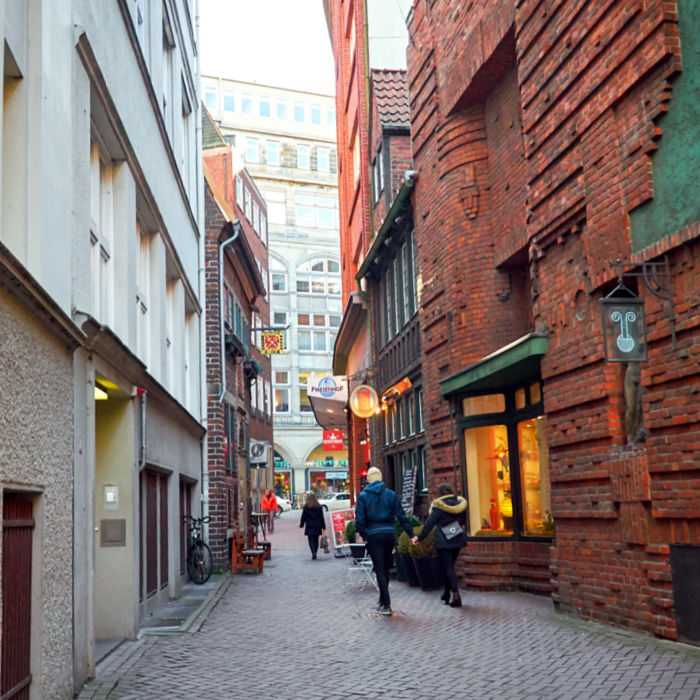 Window shopping down the Böttcherstraße in Bremen.
Window shopping down the Böttcherstraße in Bremen.4. Universum Bremen
Looking like a huge mussel shell emerging from the water, this science center encourages people of all ages to interact with the over 250 exhibits.
5. Die Bremer Stadtmusikanten
Make sure you stop by the "Town Musicians of Bremen" statue and give the donkey's hoof and snout a rub. This statue is a nod to the Grimm Brothers' fairy tale.
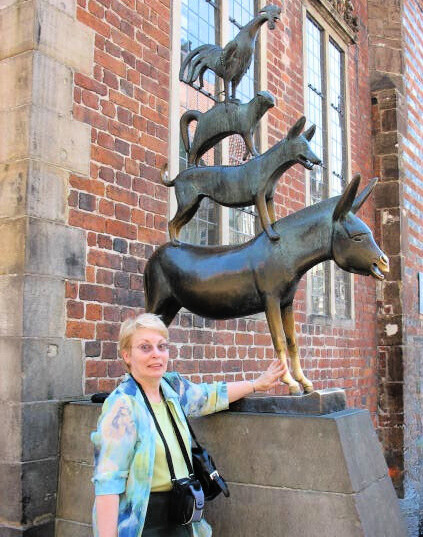 I'm doing the touristy thing by giving the hoof of Die Bremer Stadtmusikanten statue a little rub.
I'm doing the touristy thing by giving the hoof of Die Bremer Stadtmusikanten statue a little rub.Learn more about Bremen:
(City State) Hamburg
The second largest of the city states as well as the second largest city in Germany, the Hanseatic city of Hamburg, is one of Europe's busiest port cities. Called the "Gateway to the World”, its international harbor has enjoyed access to spices and foreign foods for centuries. Add in Hamburg's diverse mix of the maritime industry, theaters, museums, galleries, music venues and Hanseatic dishes, there's no shortage of places and things to enjoy.
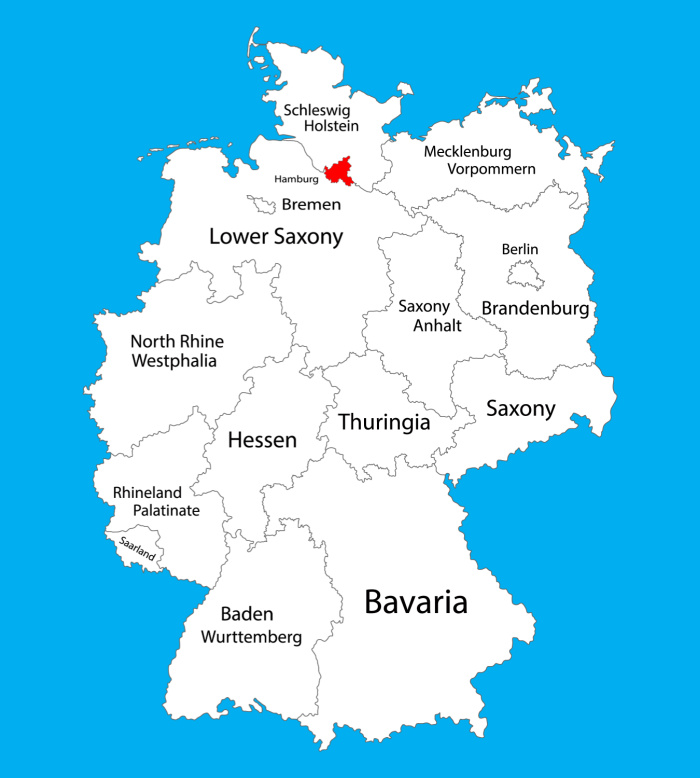
Must-see attractions:
1. Speicherstadt and Kontorhaus District
This historic warehouse district is a UNESCO World Heritage Site (make sure you take a harbor tour boat through here!)
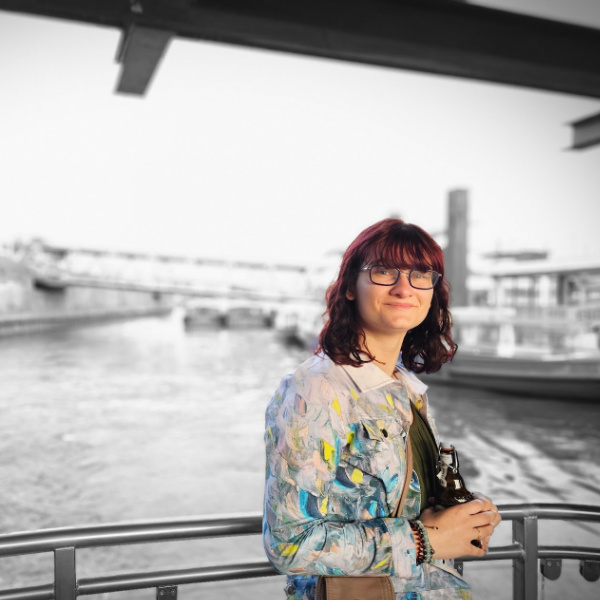 I captured this sunset photo of Lydia just as we were coming into harbor from our boat tour of the warehouse district.
I captured this sunset photo of Lydia just as we were coming into harbor from our boat tour of the warehouse district.2. Michel
St. Michael's Church is lovingly called just "Michel" and is a symbol of Hamburg. It's considered the most important baroque church in northern Germany.
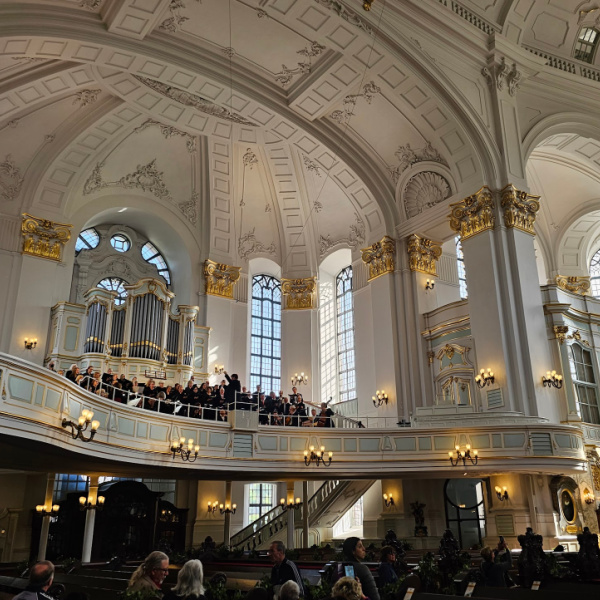 Entering St. Michael's, we were pleasantly surprised to find the orchestra performing for us during their choir practice.
Entering St. Michael's, we were pleasantly surprised to find the orchestra performing for us during their choir practice.3. Miniatur Wunderland
All railway enthusiasts need to see this world-famous miniature model railway exhibit, filled with more than just trains. Whole worlds emerge to engage people of all ages.
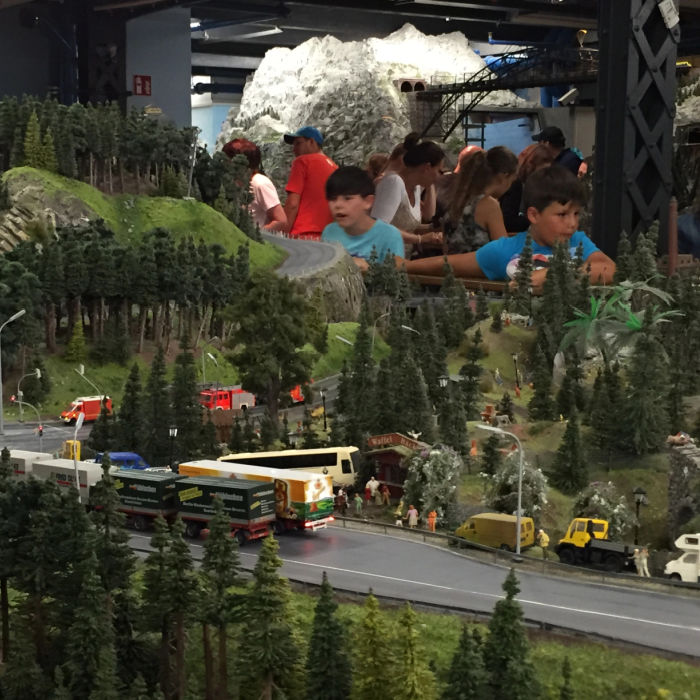 Miniatur Wunderland in Hamburg is for everyone of all ages.
Miniatur Wunderland in Hamburg is for everyone of all ages.4. Planten un Blomen
Literally, Plants and Flowers, is a park near the St. Pauli district where one can escape the hustle of everyday life by strolling through the landscaped gardens and visiting the Japanese teahouse.
5. Binnenalster und Außenalster
The Inner Alster and the Outer Alster are two man-made lakes that provide many options: leisurely walks, boating, picnicking, jogging and more.
Learn more about Hamburg:
Hesse
More than 2,000 years ago, the Germanic Chatti tribe settled in the region now known as Hesse (Hessen in German). It's become one of the largest and healthiest economies in Europe, with one of the best transportation networks of autobahns, high-speed trains, and waterways crisscrossing the state.
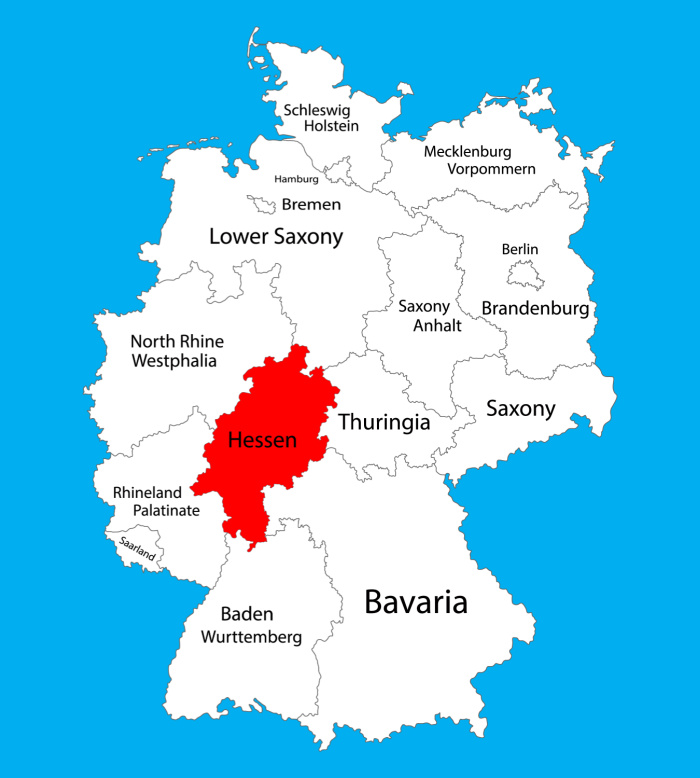
Must-see attractions:
1. Rhine River Cruise
Climb aboard one of the many Rhine River cruises available, with options from short hops of an hour to two to longer scenic trips with dining and entertainment that travel along the Rhine.
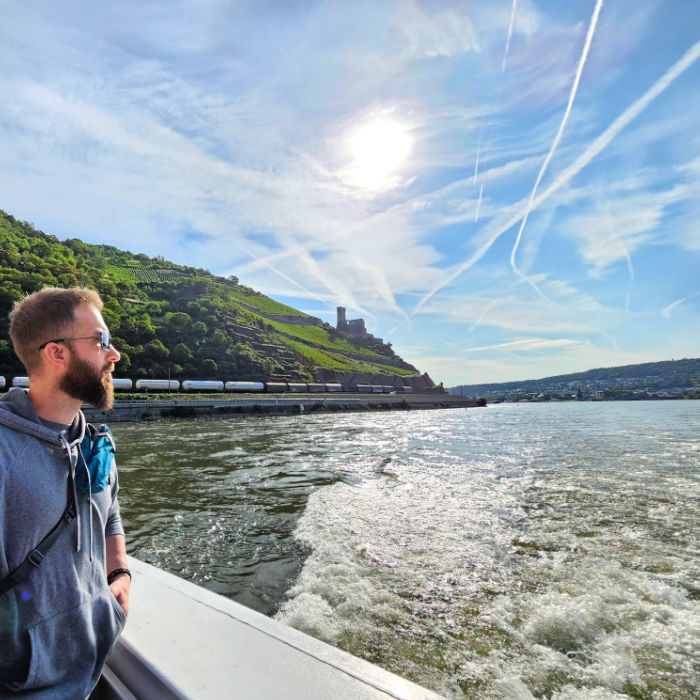 We traveled from Bacharach to St. Goar, enjoying the wind and sun on our Rhine River cruise, seeing many castles.
We traveled from Bacharach to St. Goar, enjoying the wind and sun on our Rhine River cruise, seeing many castles.2. Römerkastell Saalburg
Head northwest of Bad Homburg to find the Saalburg Roman Fort if you're into ancient history and want to see the best reconstructed Roman fort in Germany.
3. Museumsufer
This "museum embankment" has 39 museums along the banks of the Main River with many within easy walking distance of each other in Frankfurt.
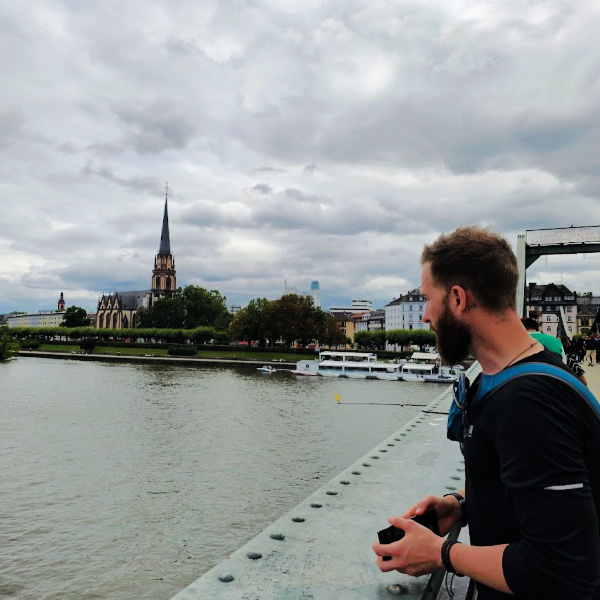
4. Reichsabtei Lorsch
The Lorsch Abbey remains are among the most important pre-Romanesque–Carolingian style buildings in Germany. And yes, this one too is another UNESCO World Heritage Site.
5. Fulda Cathedral
In Fulda, you'll find what was formerly the abbey church of Fulda and where Saint Boniface is buried. The Fuldaer Dom has Baroque architecture that's reminiscent of Saint Peter's Basilica in Rome.
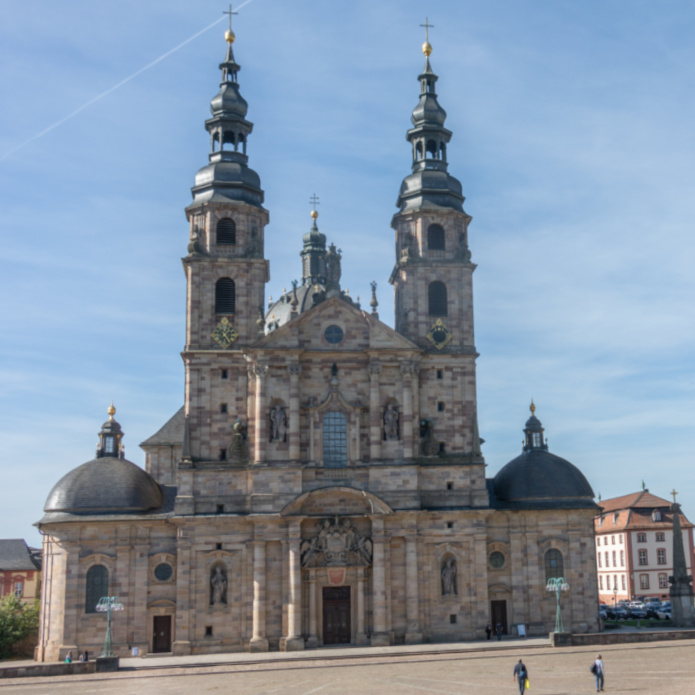 The Fulda Cathedral is known for its stunning Romanesque architecture and its historical significance as a symbol of the Fulda's rich religious and cultural heritage.
The Fulda Cathedral is known for its stunning Romanesque architecture and its historical significance as a symbol of the Fulda's rich religious and cultural heritage.Learn more about Hesse:
Lower Saxony
Lower Saxony, also known as Niedersachsen, is the second-largest state in Germany. Bordering eight German states, the North Sea, and the Netherlands, this state also includes the seven East Frisian Islands. Although there are many dense forests and rolling hills in this state, agriculture and farming here are an important part of the economy of Germany.
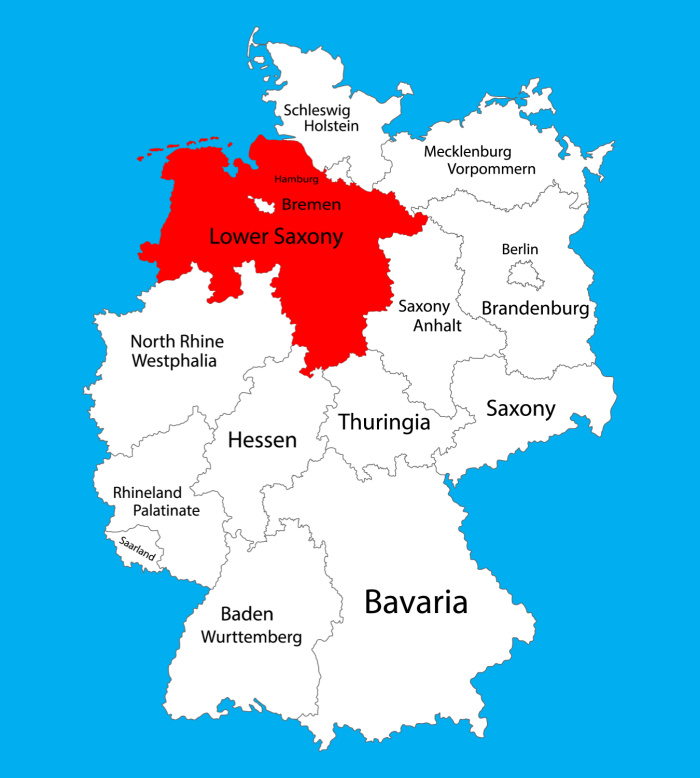
Must-see attractions:
1. Autostadt
Literally, Automobile City, this IS the place to go if you love the Love Bug. Wolfsburg is the hometown and largest maufacturing facility of Volkswagen. Autostadt is their theme park of all things VW.
2. Harz Mountains
The Harz Mountains are known for their natural beauty, lush forests and gorgeous scenery. You can hike the themed trails that wind through the park's beech and spruce woods, like the Bark Beetle Trail and the Dandelion Trail. Keep your eyes open for the wildlife that calls this place home, from deer and wild boar to the elusive lynx.
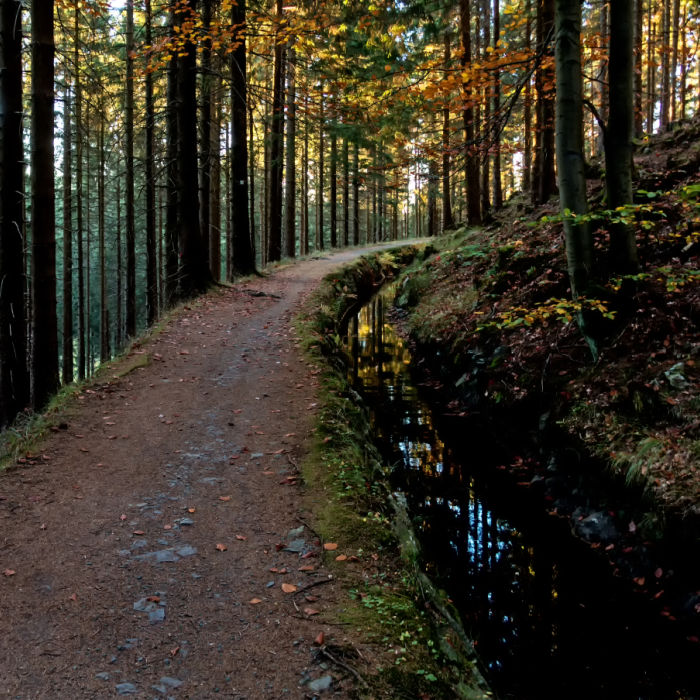 Hike through the Harz Mountains in Lower Saxony.
Hike through the Harz Mountains in Lower Saxony.3. Goslar Old Town
This UNESCO World Heritage site boasts more than 1,000 half-timbered buildings dating from the 15 century to 19th century, all within just one square kilometer!
4. Wadden Sea National Park
A totally different kind of UNESCO World Heritage site. The mudflats and tidal creeks along with the abundand birdlife bring a unique coastal ecosystem into the mix.
5. Hamelin
A quaint little town in Lower Saxony that's filled with tales of rats (or tails of rats) if you visit the Rattenfängerhaus. It's also known as the Pied Piper's town from the Brothers Grimm's tale.
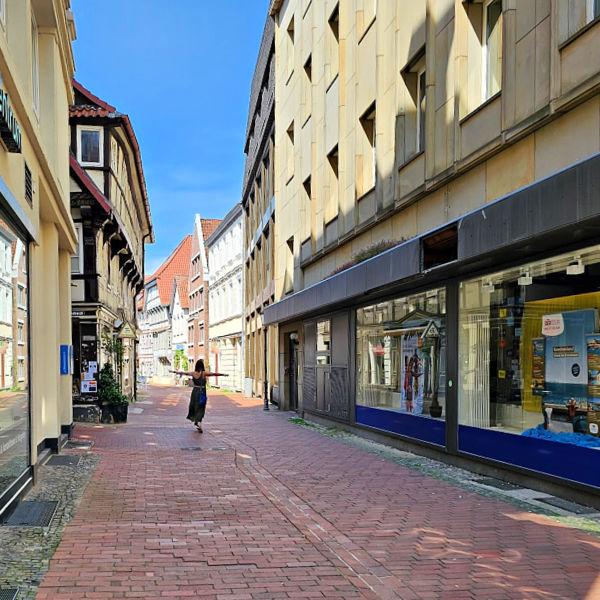 Lydia dancing down the cobblestone streets of Hamelin.
Lydia dancing down the cobblestone streets of Hamelin.Learn more about Lower Saxony:
Mecklenburg-Vorpommern
A leading tourist destination among the 16 Federal States of Germany is Mecklenburg-West Pomerania, home to more than 2,000 lakes. With 1,200 miles of coastline, sailing, canoeing, kiting, rafting and beach parties are popular. Add over 2,000 palaces, castles, and manor houses, including UNESCO World Heritage sites, you won't run out of things to do in Mecklenburg-Western Pomerania.
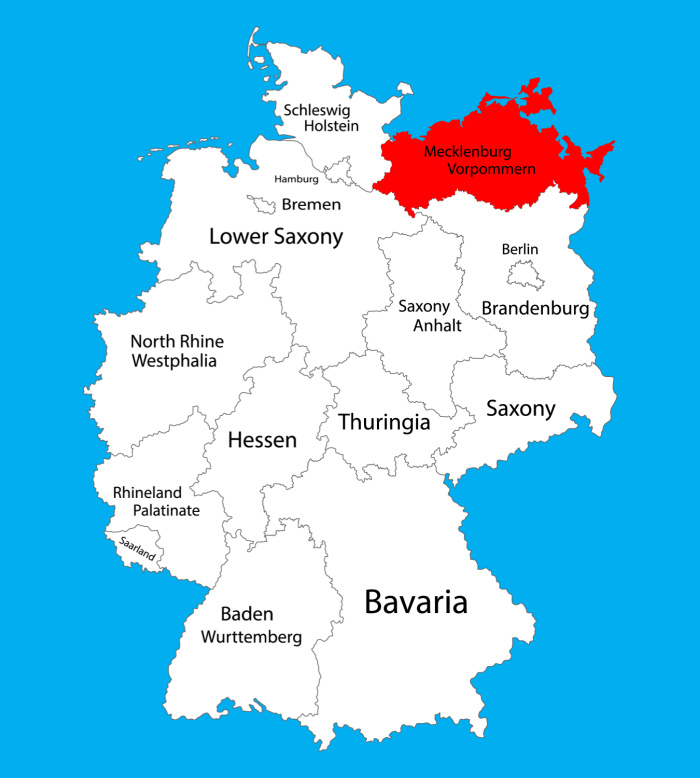
Must-see attractions:
1. Schweriner Schloss
Schwerin Palace is often called the "Neuschwanstein of the North". What started as a fort, its present day status is now a meticulously restored palace.
2. Rügen
The largest island in Germany, Rügen, impresses with its fine sandy beaches, seaside resorts and chalk cliffs, including the UNESCO World Heritage Site, Jasmund National Park.
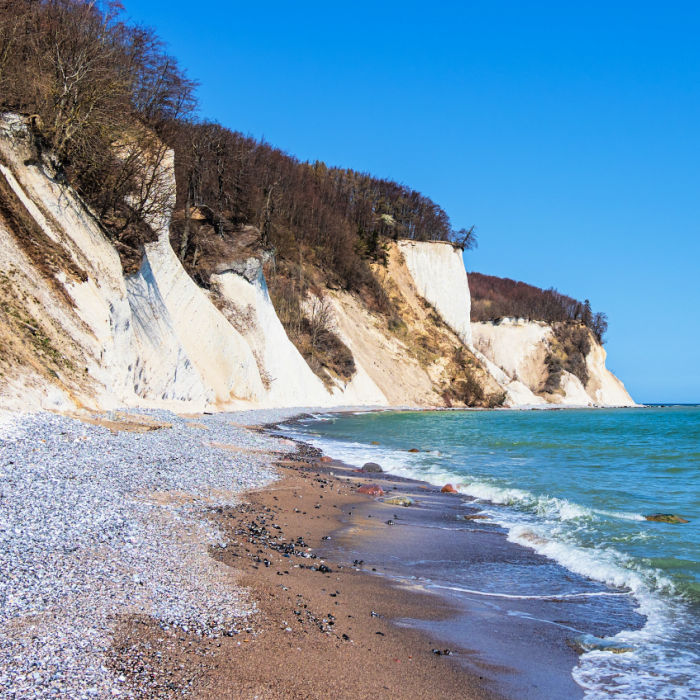 The chalk cliffs on the Baltic Sea coast on the island of Rügen, Germany.
The chalk cliffs on the Baltic Sea coast on the island of Rügen, Germany.3. Nationalpark Müritz
If you're a nature lover who loves to hike and bike amid the pristine lakes, wetlands, and forest, then the largest national park in Germany, Müritz National Park, is where you need to go.
4. Greifswald
This hidden gem, the University and Hanseatic City of Greifswald, is perfect if you're an art lover, think about the romantic painter Caspar David Friedrich and his paintings here :)
5. Kühlungsborn
Some more sun and sea, with fine sandy beaches, this popular seaside resort town on the Baltic Sea even features a historic steam train.
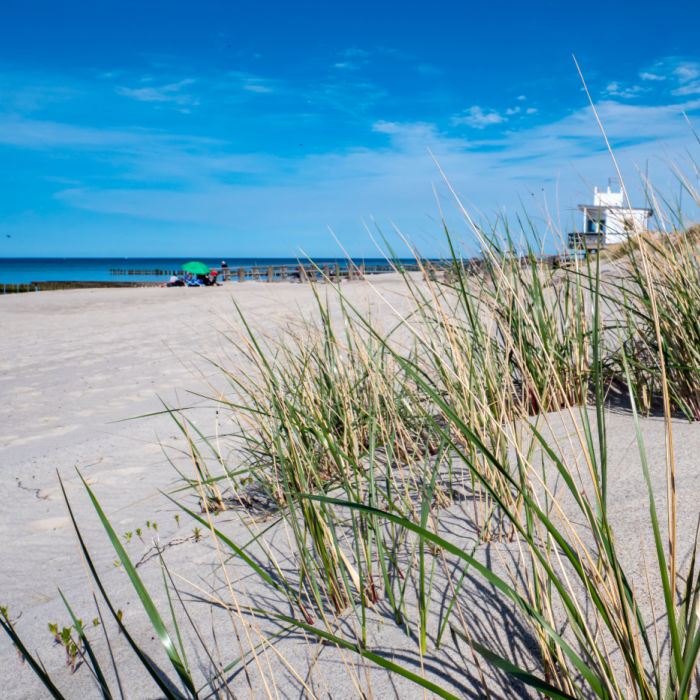 The sand dunes on the beach in Kühlungsborn along the Baltic Sea.
The sand dunes on the beach in Kühlungsborn along the Baltic Sea.Learn more about Mecklenburg-Vorpommern:
North Rhine-Westphalia
In 1946, two Prussian provinces, Rhine and Westphalia, were joined together and became Nordrhein-Westfalen which is the fourth-largest German state and the most populous state. For cultural, it's filled with universities, museums, concert halls, and theaters. For activity, there are 8,700 miles of cycling routes and numerous rivers, lakes and reservoirs for water sports. For relaxation, numerous spas, thermal baths and health resorts are available. In other words, there's something for everyone!
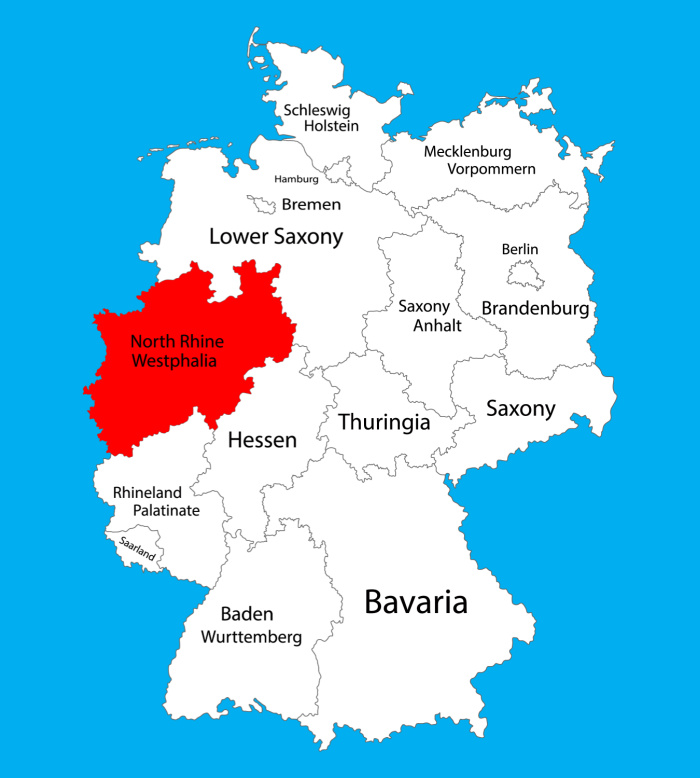
Must-see attractions:
1. Kölner Dom
The Cologne Cathedral, a UNESCO World Heritage Site, is a Gothic cathedral known for its breathtaking architecture both inside and out. A climb up the spiral staircase of 500 steps in the spire for an awe-inspiring view of Cologne is a must (but only if you are fit!).
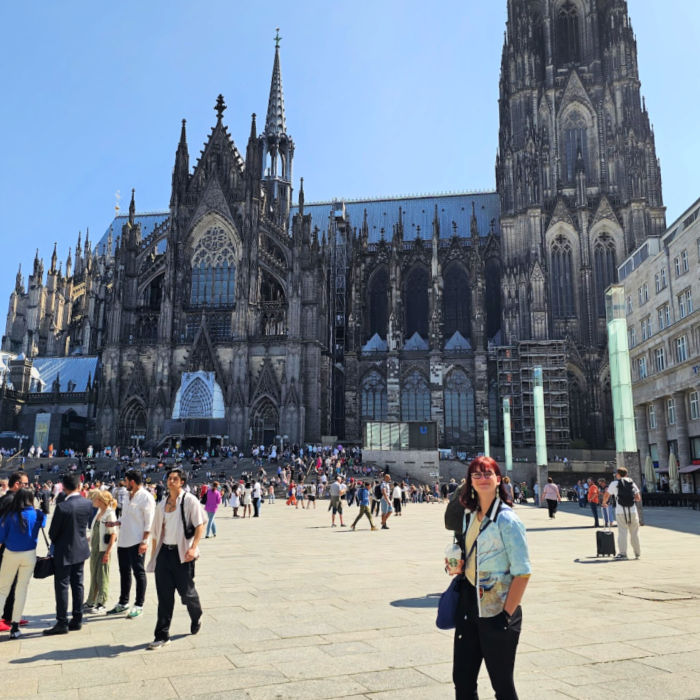 Lydia enjoying a refreshing very German Starbucks Frappuccino after our visit to the Cologne Cathedral.
Lydia enjoying a refreshing very German Starbucks Frappuccino after our visit to the Cologne Cathedral.2. Wuppertal Schwebebahn
Take a ride in this historic suspended monorail in Wuppertal. See the statue of Tuffi, an elephant from a traveling circus back in 1950, who jumped out the monorail window into the Wupper River. And survived!
3. Landschaftspark Duisburg-Nord
Climb to the top of a decommissioned blast furnace in the midst of a former industrial site turned park and enormous adventure playground. Duisburg-Nord Landscape Park is for adults and children alike.
4. Schloss Nordkirchen
Called the Versailles of Westhalia, Nordkirchen Castle is known for it's beautifully landscaped gardens and its Baroque architecture.
5. Eifel National Park
This is a paradise for hikers, with hills, valleys, gorges, waterfalls, lakes, moors, meadows, and extinct volcanoes, all kept with the park motto “Let nature be nature”.
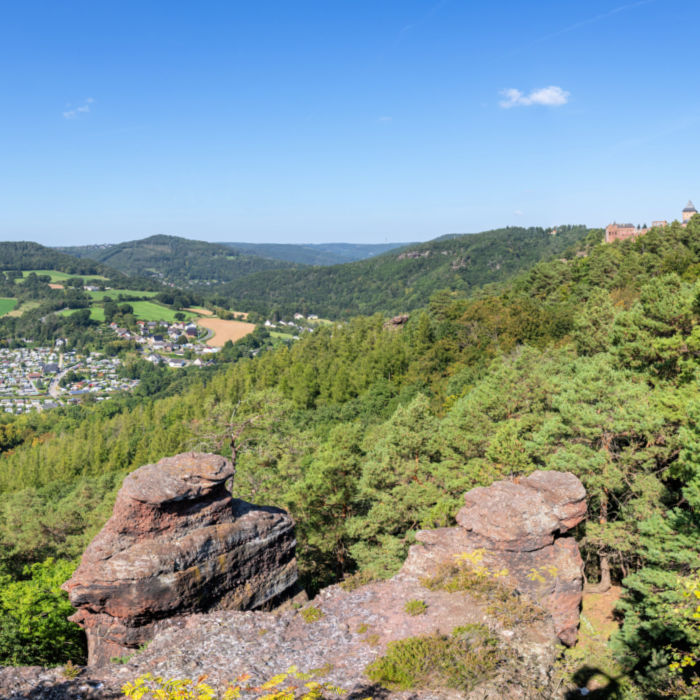 Let nature be nature at the Eifel National Park in North Rhine-Westphalia.
Let nature be nature at the Eifel National Park in North Rhine-Westphalia.Learn more about North Rhine-Westphalia:
Rhineland-Palatinate
Rhineland-Pfalz, the ninth-largest state in Germany, is a land filled with castles and fortresses that echo its 2,000-year history of various occupying forces. Each left an imprint on the culture of this state. For example, Roman remnants, from baths to an amphitheater, are found in Trier, Germany's oldest town, dating back to 15 BC. It was the Romans who brought wine-growing to this region, a tradition that continues today resulting in some of Germany's finest wines.
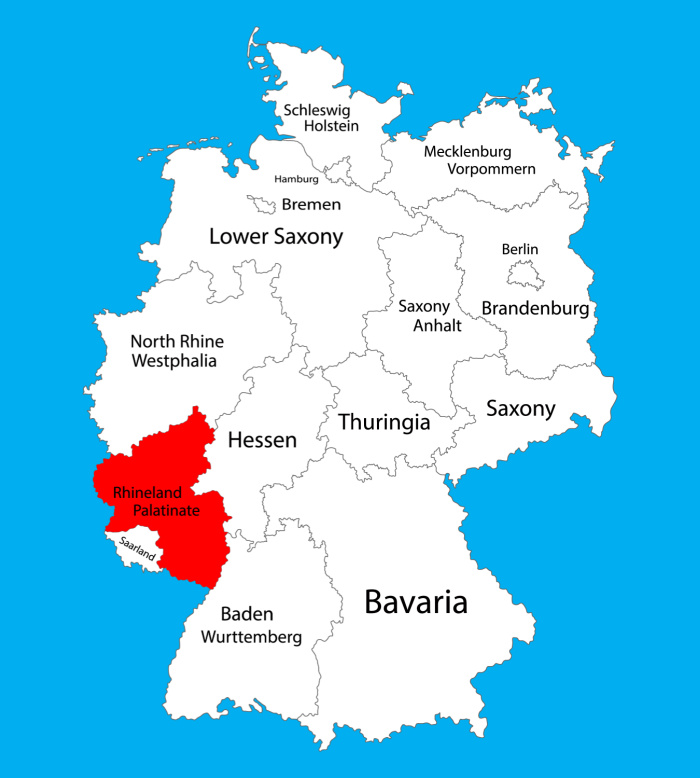
Must-see attractions:
1. Porta Nigra
The Porta Nigra, a renown UNESCO World Heritage Site in Trier, is considered the best-preserved Roman city gate north of the Alps. Standing in front of it, you'd think you were back in ancient Rome.
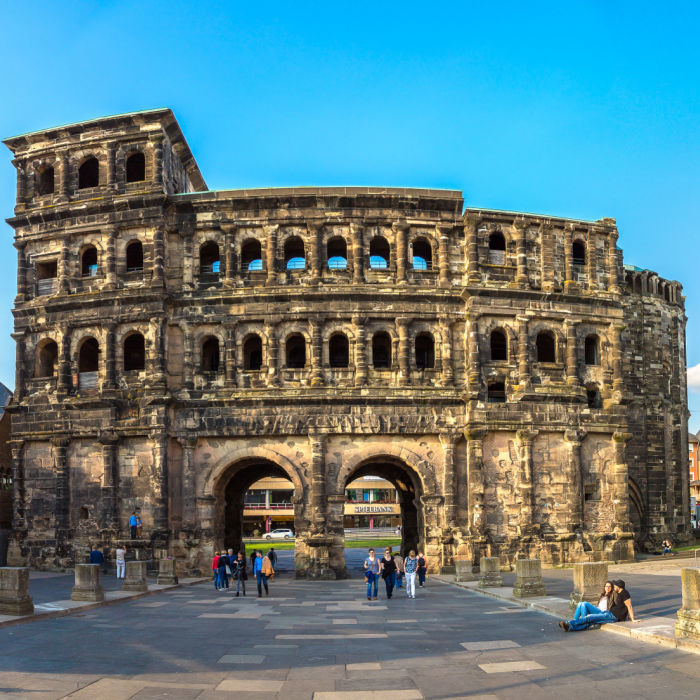 You'll think you're in ancient Rome when you visit the Porta Nigra in Trier in Rhineland-Palatinate.
You'll think you're in ancient Rome when you visit the Porta Nigra in Trier in Rhineland-Palatinate.2. Eltz Castle
Nestled in the Eifel Mountains is the Burg Eltz, the home of the Eltz family since the 12th century. This castle has never been destroyed and is a must-see for those who love history and architecture.
3. Hunsrück-Hochwald National Park
If you're into hiking, then the Nationalpark Hunsrück-Hochwald is for you with its almost 25,000 acres of forests, mountains, forests, moors, and grasslands.
4. Deutsches Eck
The Rhine and Moselle Rivers meet at the "German Corner" in Koblenz. On the bit of land where the two rivers converge is the statue of Kaiser Wilhelm I, a symbol of the unity of the German Empire.
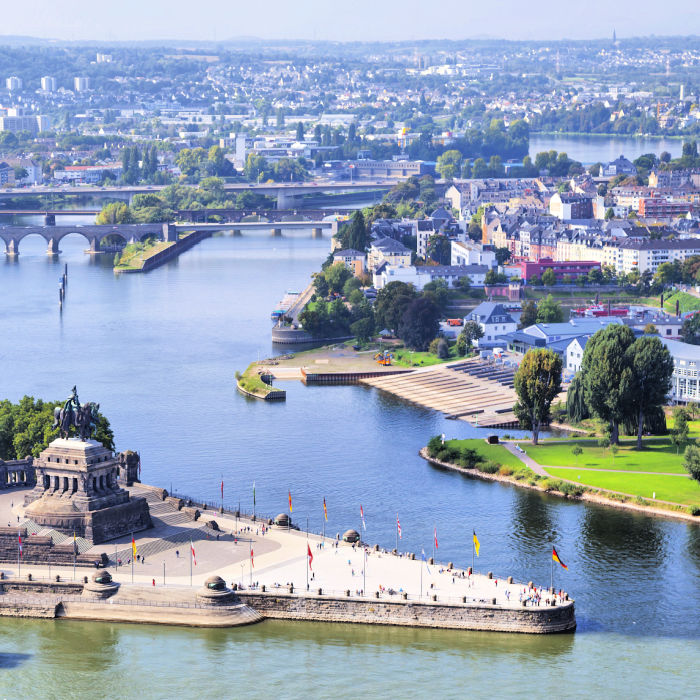 Kaiser Wilhelm I statue at the Deutsches Eck in Koblenz, Rhineland-Palatinate.
Kaiser Wilhelm I statue at the Deutsches Eck in Koblenz, Rhineland-Palatinate.5. Speyerer Dom
Another UNESCO World Heritage Site in the region, the Speyer Cathedral is one of Europe's largest cathedrals and a major monument of Romanesque architecture in Germany.
Learn more about Rhineland-Palatinate:
Saarland
The southwestern state of Saarland, which borders France, Luxembourg, and the German Rhineland-Palatinate, has been tossed back and forth between Germany and France throughout its long history. Here you can tour what seems like three different countries in one day, going through beautiful river valleys, peaceful villages, forests, vineyards, and castles, reliving the past which goes back to the Gallo-Roman and Celtic times, but at the same time experiencing the future.
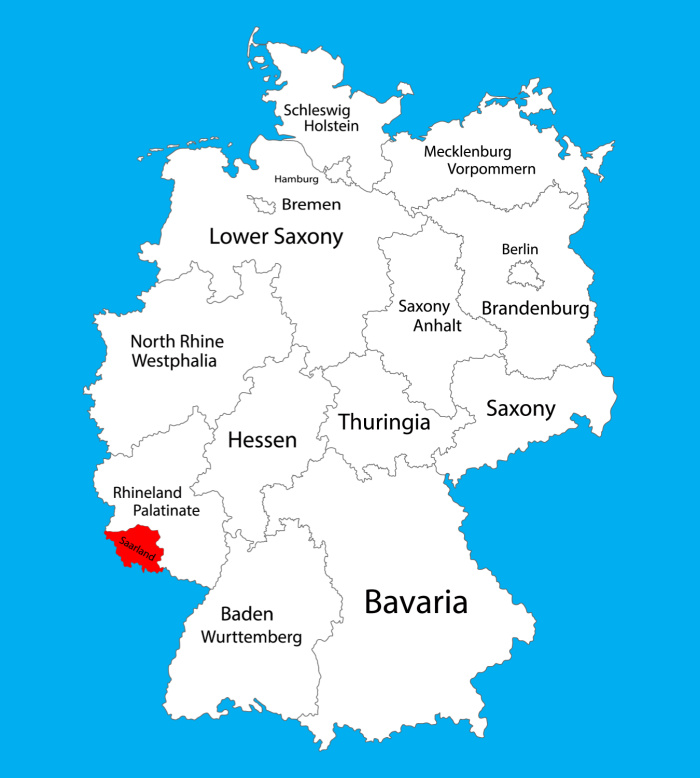
Must-see attractions:
1. Saarschleife
For breathtaking panoramic views, the horseshoe-shaped bend in the Saar River is a favorite spot for hikers and, especially, photographers. Take the Treetop Walk (Baumwipfelpfad) for the best views possible.
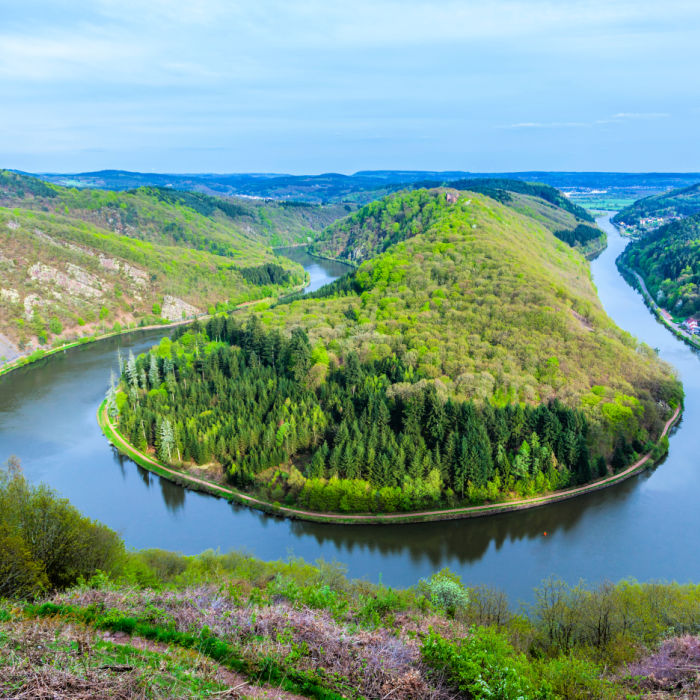 The Saar loop at Mettlach, the best view point!
The Saar loop at Mettlach, the best view point!2. Saarbrücken
The state capital city has many intriguing places to visit from the Ludwigskirche, a Lutheran baroque-style church that many say is one of the most beautiful Protestant churches in Germany to the Saarbrücken Castle with its baroque cellar vaults. Take a break from the tourists and stroll along the banks of the Saar River.
3. Völklingen Ironworks
The Völklinger Hütte may seem like a really strange UNESCO World Heritage Site, but this industrial complex with its impressive machinery, including a pig-iron blast furnace, has been turned into a museum with interactive exhibitions.
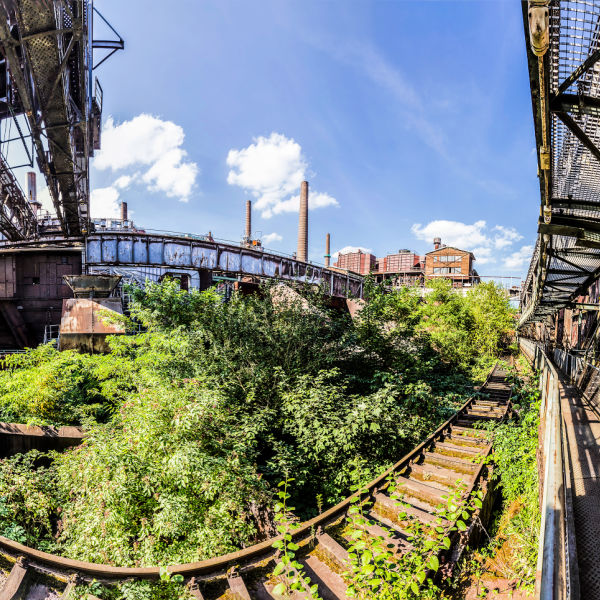 The Völklingen Ironworks, a former blast-furnace complex located in the German town of Völklingen, is now a UNESCO World Heritage Site!
The Völklingen Ironworks, a former blast-furnace complex located in the German town of Völklingen, is now a UNESCO World Heritage Site!4. Bostalsee
This 300-acre reservoir was created in the Naturpark Saar-Hunsrück, a nature reserve where one can enjoy swimming, surfing, sailing, cycling, fishing and hiking. Or, just build sandcastles on the beaches.
5. Voelklingen Christmas Market
If your time at the Ironworks is in the winter, enjoy its Christmas market. This winter wonderland is filled with craft vendors and food stalls, all the sights and smells of a German Christmas.
Learn more about Saarland:
Saxony
Known internationally as "Silicon Saxony", it's said that every fifth microchip in the world comes from this region, but it's also the place for amazing vacation highlights. There are art collections, museums of all types, castles (almost too many to visit), cycling paths, hot air ballooning, mountain biking, car racing, climbing (over 14,000 climbing routes and 1,100 peaks), rafting, hiking, and paragliding, to name just a few!
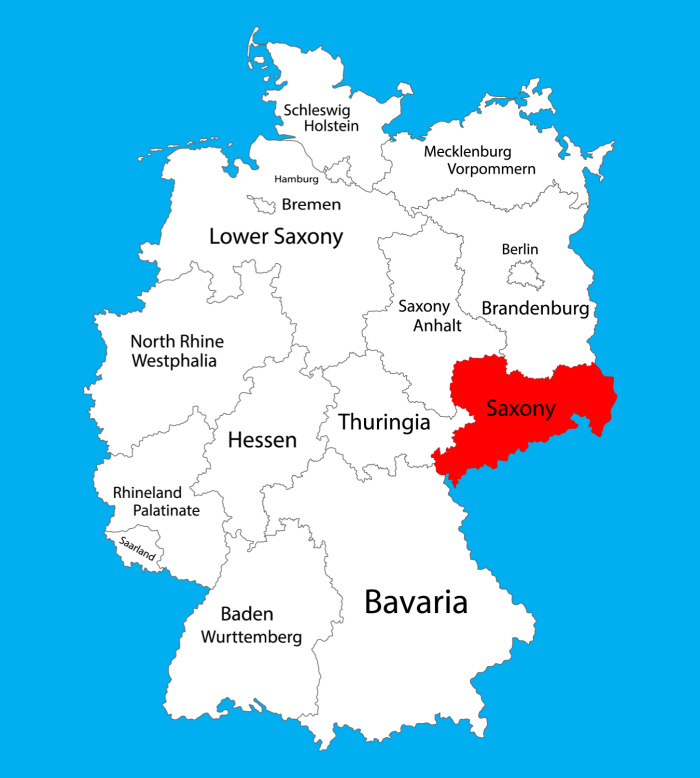
Must-see attractions:
1. Zwinger Palace
A trip to Dresden needs to include a visit to this baroque palace in Dresden including its many world-class museums, such as the Old Masters Picture Gallery. Hungry? Stop by the Alte Meister Café & Restaurant right at the Zwinger.
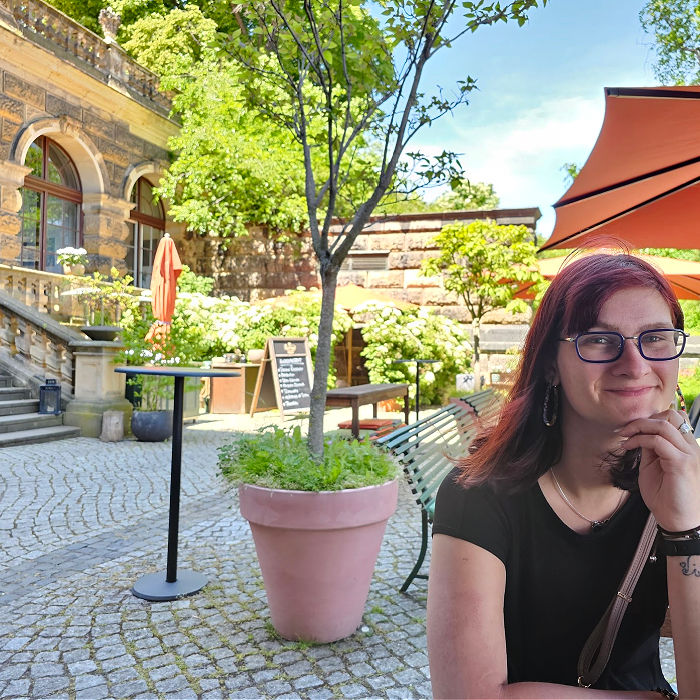 Lydia and I enjoyed a delicious lunch at the Alte Meister Café & Restaurant right at the Zwinger.
Lydia and I enjoyed a delicious lunch at the Alte Meister Café & Restaurant right at the Zwinger.2. Frauenkirche
Completely destroyed during the Second World War, but now meticulously reconstructed, the Church of Our Lady in Dresden with one of the largest domes in Europe is a symbol of hope and reconciliation.
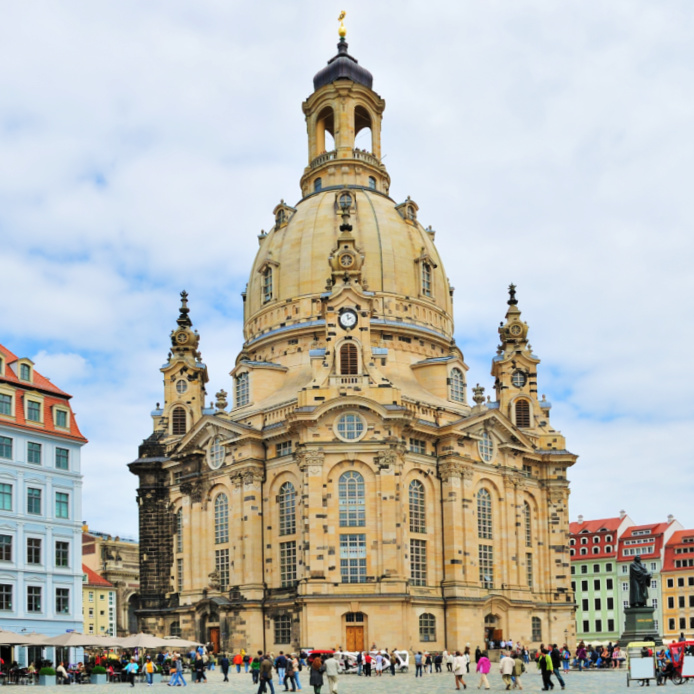 The Frauenkirche in Dresden, captured in this photo, stands as an amazing example of Baroque architecture.
The Frauenkirche in Dresden, captured in this photo, stands as an amazing example of Baroque architecture.3. Zoologischer Garten Leipzig
The Leipzig Zoological Garden is one of the oldest zoos in the world and considered the second-best in Europe. With its dedicated conservation efforts it's often called the "Zoo of the future".
4. Schloss Moritzburg
If you like opulence, then Moritzburg Castle is the place to visit. Built in a baroque style, it's known for its idyllic setting surrounded by a scenic lake.
5. Basteibrücke
Enormous sandstone pinnacles rise above the River Elbe in the Saxon Switzerland National Park. Connecting the towering rock formations is the dramatic sandstone Bastei Bridge. A photographer's dream.
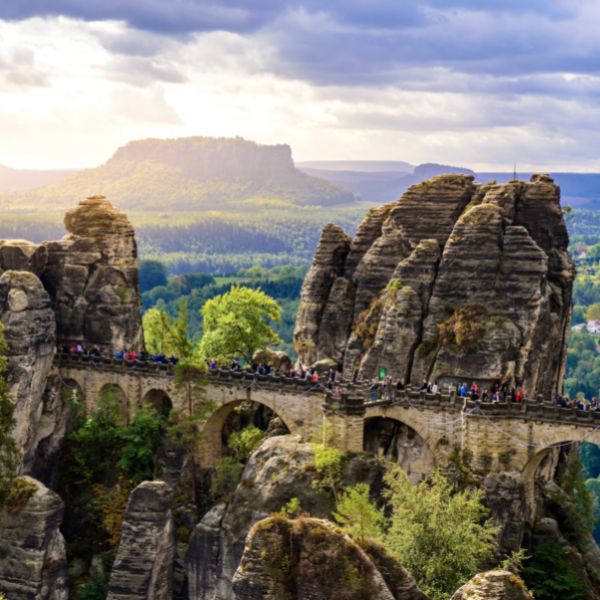 The Basteibrücke in the Saxon Switzerland National Park in Saxony. Breathtaking!
The Basteibrücke in the Saxon Switzerland National Park in Saxony. Breathtaking!Learn more about Saxony:
Saxony Anhalt
In the northeastern central part of Germany lies the federal state of Sachsen-Anhalt. Only recently unified in 1990, this area of Germany has a long and interesting history. Magdeburg was one of the greatest Christian centers in the 10th century.
In 1517, Martin Luther nailed his 95 Theses to the church door in Wittenberg changing the Christian world forever. As well, renown writers and musicians, such as Goethe, Heine, Bach, and Handel, were at home in this state. Travel 1,865 miles along the Deutsche Fachwerkstraße (German Timber-Frame Road) as it traverses this state from north to south and visit the historic towns along the way.
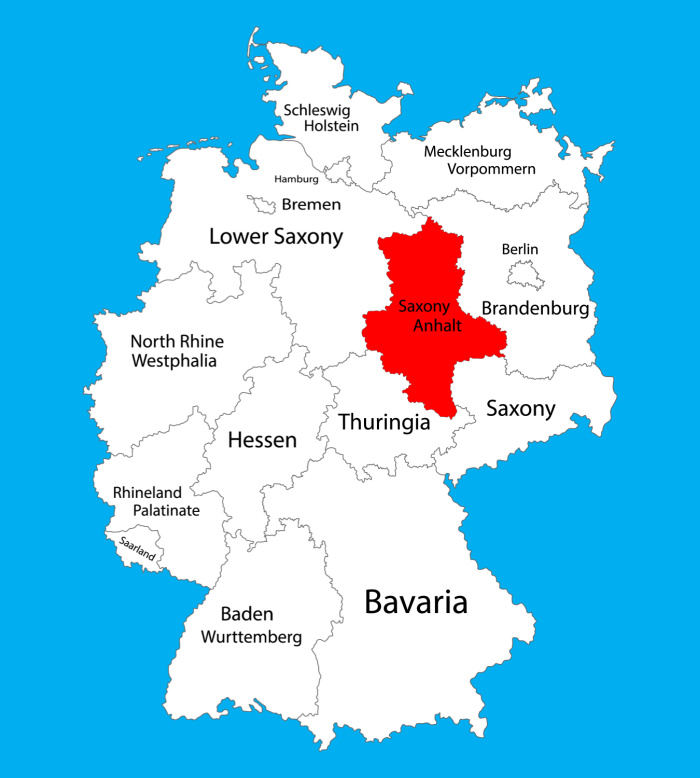
Must-see attractions:
1. Quedlinburg
With over 1,300 half-timbered houses, this medieval town is a UNESCO World Heritage Site. Perched above the town, is the magnificent Quedlinburg Castle, a medieval fortified abbey fortress.
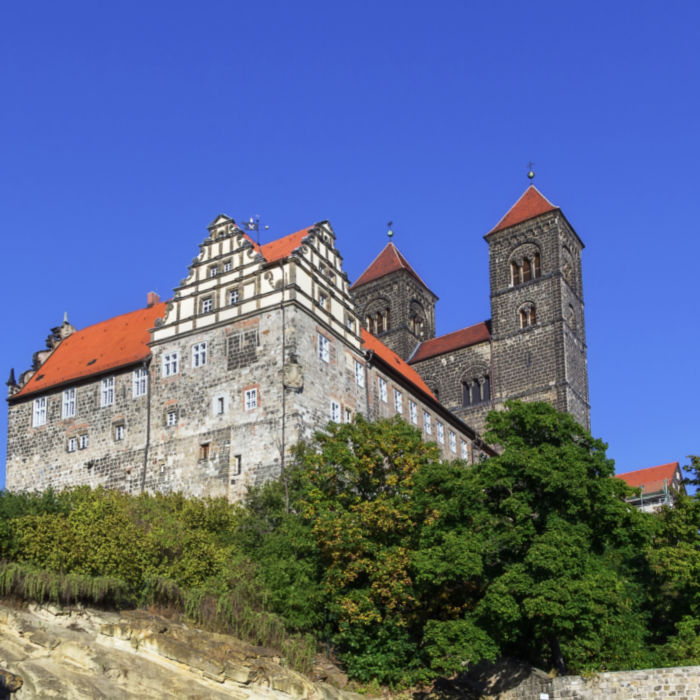 Quedlinburg castle and church perched above the medieval town.
Quedlinburg castle and church perched above the medieval town.2. Nationalpark Harz
Harz National Park: Located in the Harz Mountains, it boasts the highest peak in northern Germany, the Brocken. Hike along the themed trails or take the narrow-gauge steam train up the Brocken to see the alpine botanical garden at its peak. Enjoy all the natural beauty of the unique geology, either by hiking or skiing.
3. Kanalbrücke Magdeburg
This engineering marvel, the Magdeburg Water Bridge, is the world's longest navigable aqueduct that connects the Elbe-Havel Canal to the Mittellandkanal, crossing over the Elbe River.
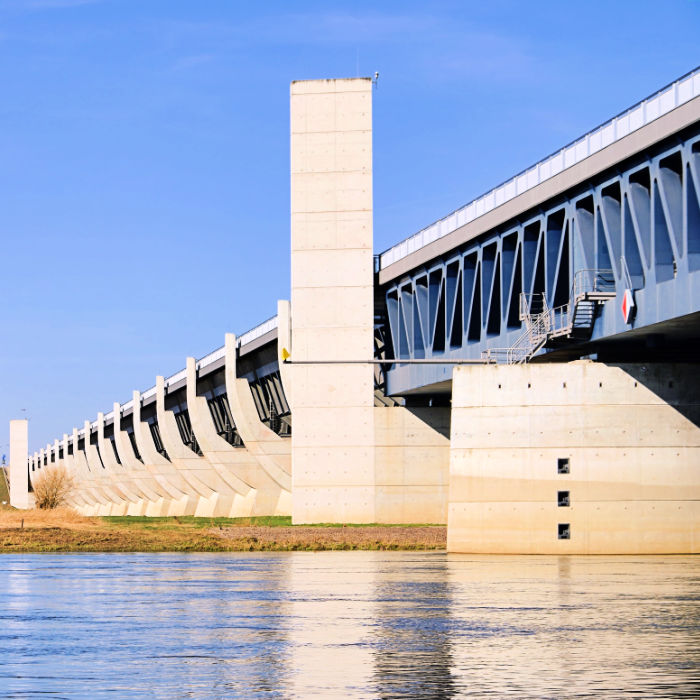 The Magdeburg Water Bridge is a remarkable engineering marvel, a navigable aqueduct that spans the Elbe River, allowing ships to cross above the water.
The Magdeburg Water Bridge is a remarkable engineering marvel, a navigable aqueduct that spans the Elbe River, allowing ships to cross above the water.4. Bauhaus Dessau
With old architecture being the normal draw for tourists, a tour of the Bauhaus-Building Dessau that showcases the 20th century Bauhaus art movement is a nice change of pace.
5. Wittenberg
This is where Martin Luther posted his 95 Theses and is now known as the birthplace of the Protestant Reformation. A visit to the Luther House and the Castle Church is a visit back in time.
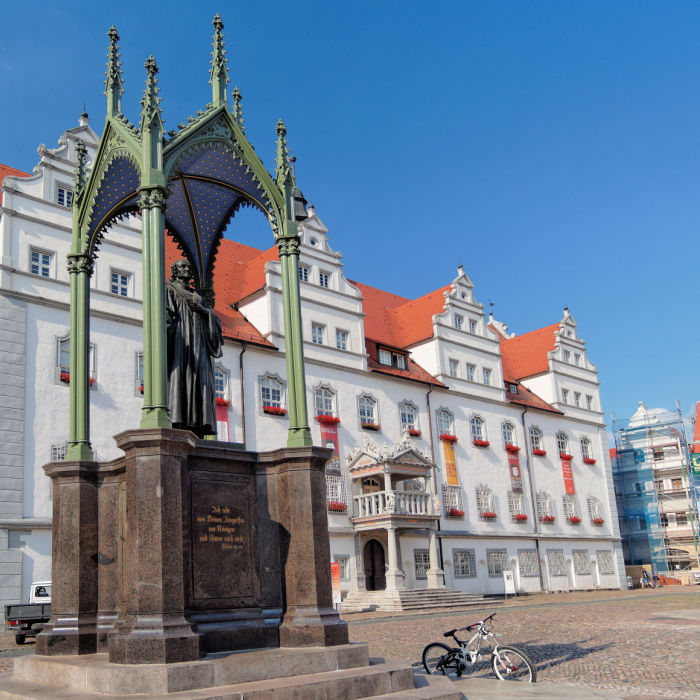 The Luther statue and the town hall of Wittenberg, Germany
The Luther statue and the town hall of Wittenberg, GermanyLearn more about Saxony Anhalt:
Schleswig-Holstein
"Moin Moin!” is the friendly greeting you'll receive when you visit this most northern state that lies between the stormy North Sea and the relatively calm Baltic Sea. Before 1946, wars and political intrigue left this part of the country economically poor. Agriculture and fisheries provided the sole basis for survival, leaving their mark on the cuisine of the area. In 1946, Schleswig-Holstein attained political unity. The influences of Denmark and Germany are intermingled in their culture and cuisine.
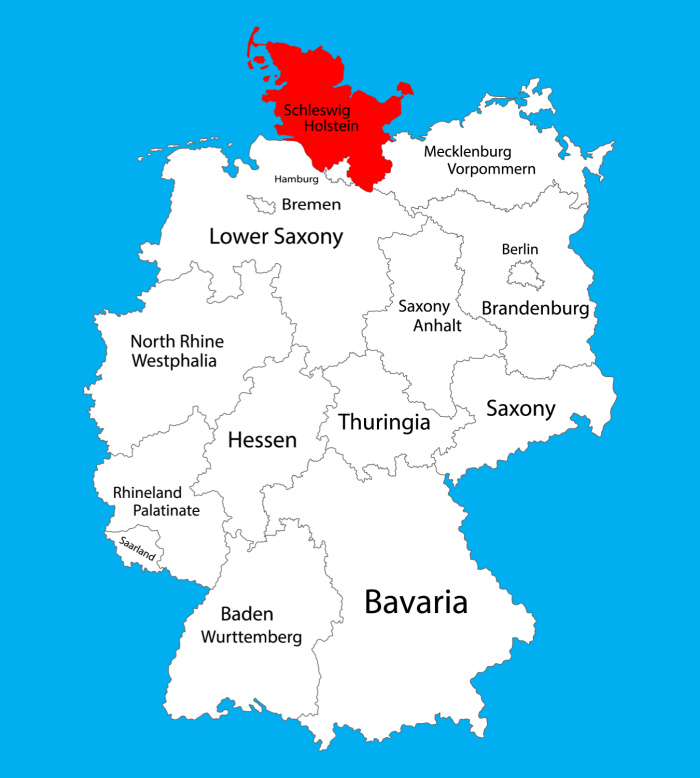
Must-see attractions:
1. Nationalpark Schleswig-Holsteinisches Wattenmeer
The Wadden Sea National Park is where you can camp, hike, and take guided tours on the tidal mudflats, an experience that will have you coming back for more. It is a unique coastal ecosystem and truly earned its entry as a UNESCO World Heritage Site.
2. Lübeck Old Town
This medieval old town is a UNESCO World Heritage site and is characterized by its well-preserved architecture, including Gothic brick buildings, narrow alleyways, and the town hall. And, of course, marzipan!!!
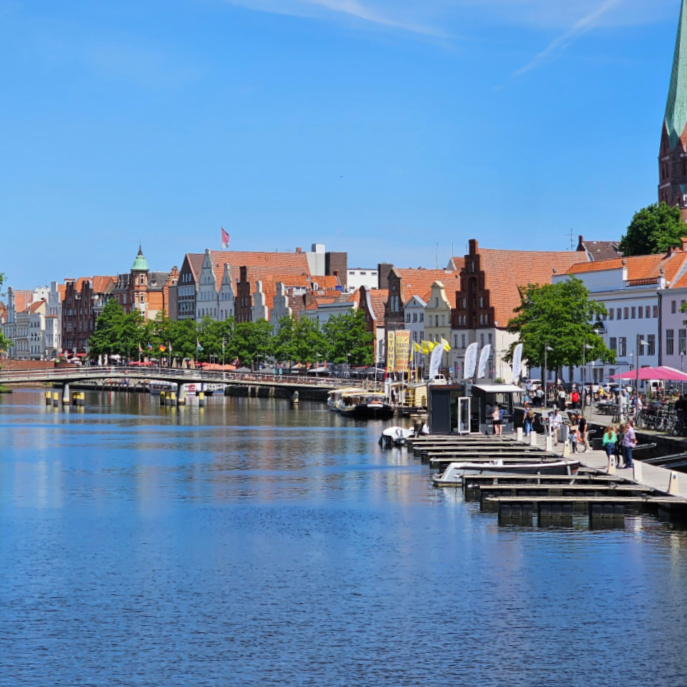 Lübeck along the Trave River. Perfect for summertime activities.
Lübeck along the Trave River. Perfect for summertime activities.3. Schleswiger Dom
The magnificent Schleswig Cathedral boasts both Romanesque and Gothic architecture and houses an extensive collection of art and artifacts.
4. Flensburg
This historic town is at the tip of the Flensburg Fjord which is the westernmost inlet of the Baltic Sea. Enjoy the sea air as you savor the maritime atmosphere with its historic buildings, museums, and sample local cuisine.
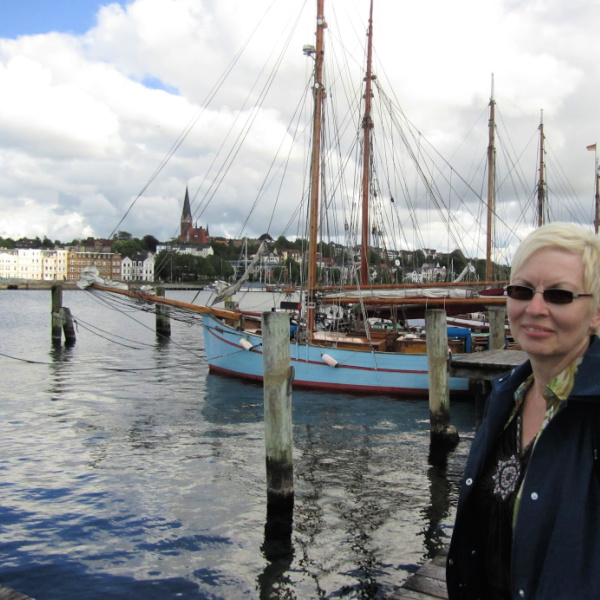 I'm enjoying the sea air as we stroll along the harbor in Flensburg.
I'm enjoying the sea air as we stroll along the harbor in Flensburg.5. Nord-Ostsee-Kanal
The Kiel Canal is one of the busiest artificial waterways in the world, connecting the North Sea and the Baltic Sea. What to do there? Watch the ships, visit the locks, museums and the Holtenau Lighthouse, and take a boat tour along the canal.
Learn more about Schleswig Holstein:
Thuringia
The last of our 16 Federal States of Germany is located in the geographical center of the country, the Free State of Thuringia (Thüringen). It was once called a “patchwork of principalities” and helped shape not only German but European history.
Its central location made it a main hub of trade and commerce, giving the area a great diversity of customs and traditions. With its abundance of forests and mountains, this “Green Heart of Germany” has one of the best-known hiking routes in Europe.
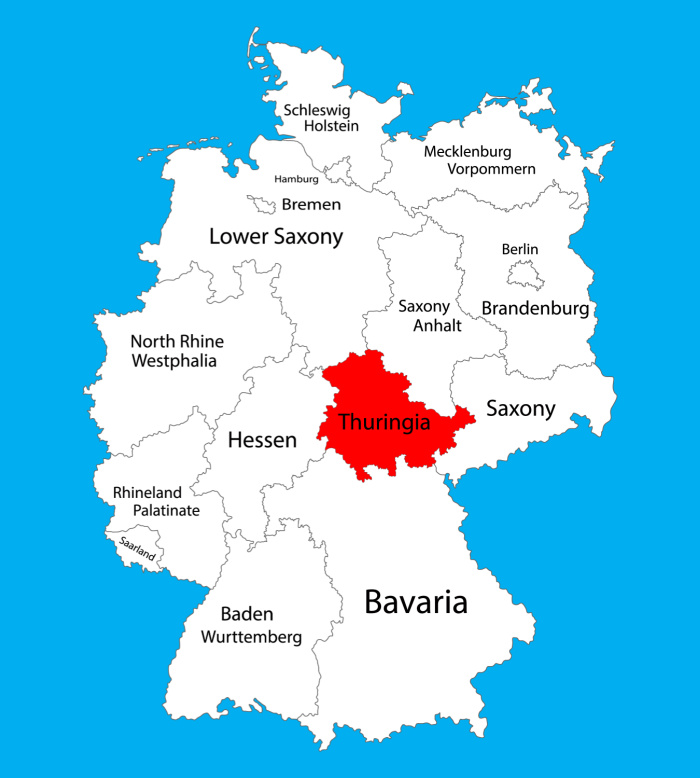
Must-see attractions:
1. Wartburg Castle
High on top of a mountain just outside of Eisenach, Wartburg is a UNESCO World Heritage Site renowned for its association with Martin Luther and the translation of the Bible into German. The panoramic views of the surrounding landscape from the castle are stunning. You can even stay for the night!
2. Weimar
A city of great cultural significance, known for being home to famous figures such as Goethe, Schiller, and the Bauhaus school. Visit museums, theaters, and historic sites throughout the city.
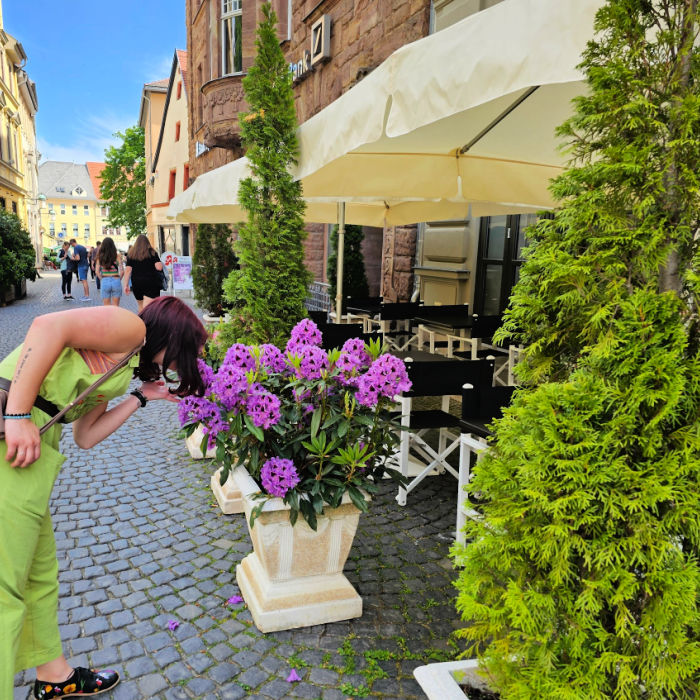 Lydia, stopping to smell the 'roses' as we tour through Weimar, Germany
Lydia, stopping to smell the 'roses' as we tour through Weimar, Germany3. Nationalpark Hainich
The Hainich National Park is home to ancient native beech forests and is a UNESCO World Natural Heritage Site. It's perfect for an adventurous hike or a family trip, with various walking trails throughout.
4. Thüringer Wald
The Thuringian Forest is a scenic mountain range that offers opportunities for hiking, biking, and winter sports. The 100-mile-long Rennsteig hiking trail is Germany's most famous long-distance trail and runs over the ridge of the mountain range.
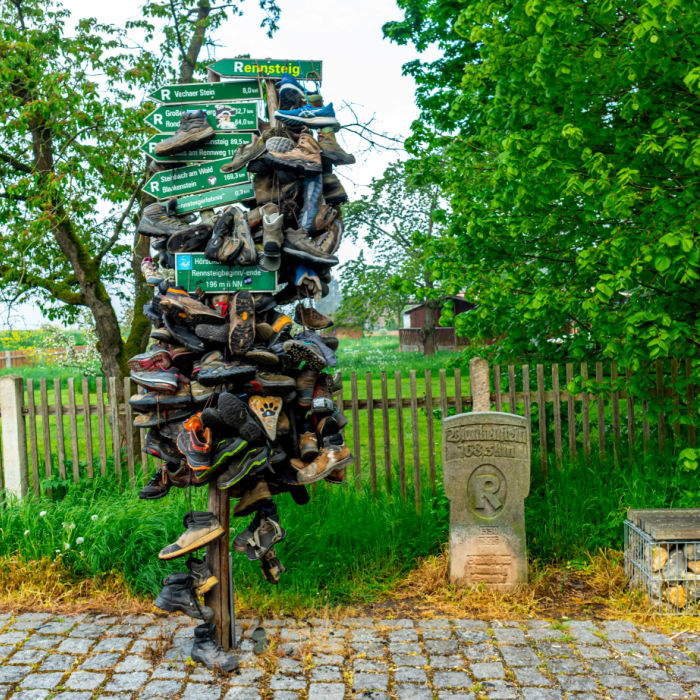 First steps along the Rennsteig hiking trail in Thuringia, Germany.
First steps along the Rennsteig hiking trail in Thuringia, Germany.5. Erfurt Cathedral
The Erfurt Cathedral has stunning Gothic architecture, both inside and out and still has the world's largest medieval free-swinging bell. Situated in the beautifully preserved old town of Erfurt.
Learn more about Thuringia:
Discover the 16 Federal States of Germany!
Why not make yourself an exciting to-do list and plan to visit each one of these 16 Federal States of Germany ... perhaps one every year. Take time to smell the "roses" in each place as you get to know the people and customs. Savor the local foods. See the sights.
Get to know the REAL Germany ... all of it!

